Turkish desserts are renowned for their rich flavors and indulgent textures. They often feature ingredients like nuts, honey, syrup, and dairy products such as yogurt and cheese. Baklava, a layered pastry filled with nuts and soaked in syrup, is perhaps the most famous. Other favorites include künefe, a sweet cheese pastry soaked in syrup; şekerpare, soft semolina cookies dipped in syrup; and revani, a sponge cake soaked in syrup. Turkish desserts also showcase creative combinations like sutlach, a creamy rice pudding flavored with rose water. These treats are enjoyed during celebrations, holidays, and as everyday delights across Turkey's diverse culinary landscape.
Baklava
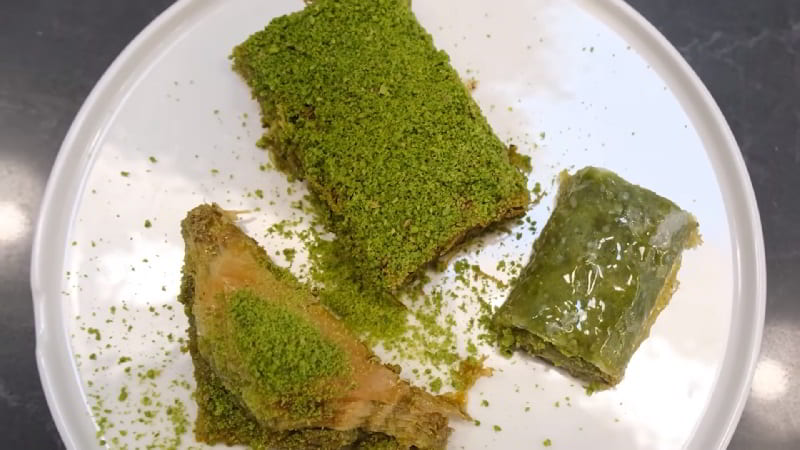
Baklava, a cherished Turkish dessert revered worldwide for its opulent flavors, comprises layers of delicate, flaky pastry sheets generously filled with finely chopped nuts, commonly walnuts or pistachios. Each layer is meticulously brushed with melted butter and baked to a golden hue. Once out of the oven, the baklava is immersed in a syrup concocted from sugar, water, and lemon juice or rose water, infusing it with a tantalizing sweetness and aromatic essence while ensuring a moist, sticky texture. The interplay of crispy phyllo layers, fragrant nuts, and sweet syrup forms a divine symphony of flavors and textures. Often adorned with ground pistachios or a sprinkle of cinnamon, baklava exudes elegance and taste. This beloved dessert is a highlight at gatherings, complementing Turkish tea or coffee impeccably. Its decadent allure and exquisite presentation elevate any dessert table, enchanting those with a penchant for sweetness and sophistication.
Turkish Delight
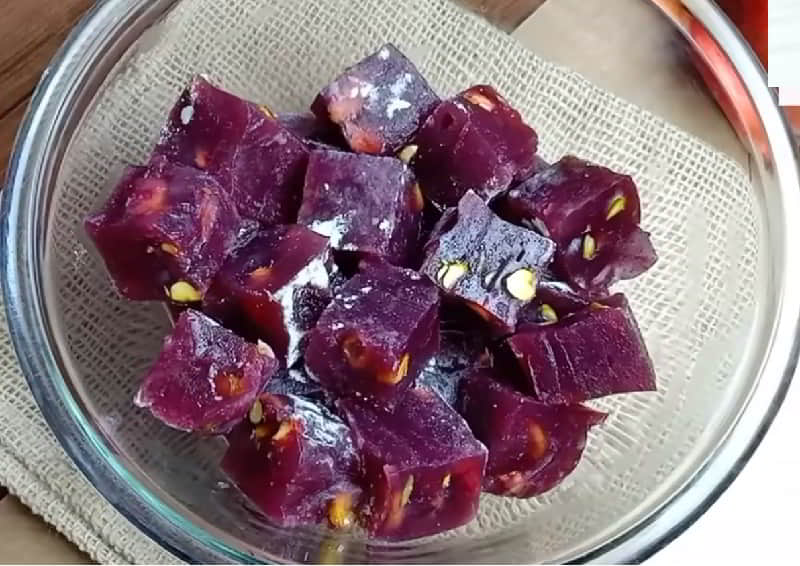
Turkish delight, or "lokum," is an enduringly beloved dessert with roots reaching back centuries in Turkey. This confection blends sugar, water, and starch, infused with diverse flavors like rosewater, lemon, pistachios, or hazelnuts. The mixture simmers until thickened before being poured into trays to cool and set. Once firm, it's cut into cubes and dusted with powdered sugar to maintain its soft, chewy texture. Each bite delivers a delicate, aromatic burst of sweetness that tantalizes the palate. Turkish delight enjoys global acclaim, often savored during festivities or exchanged as a gift. Paired perfectly with Turkish tea or coffee, it adds a delightful sweetness to every sip. Whether you favor the classic rose flavor or the nut-infused variations, Turkish delight remains an irresistible treat, leaving a lingering desire for another taste of its delectable charm.
Knafeh
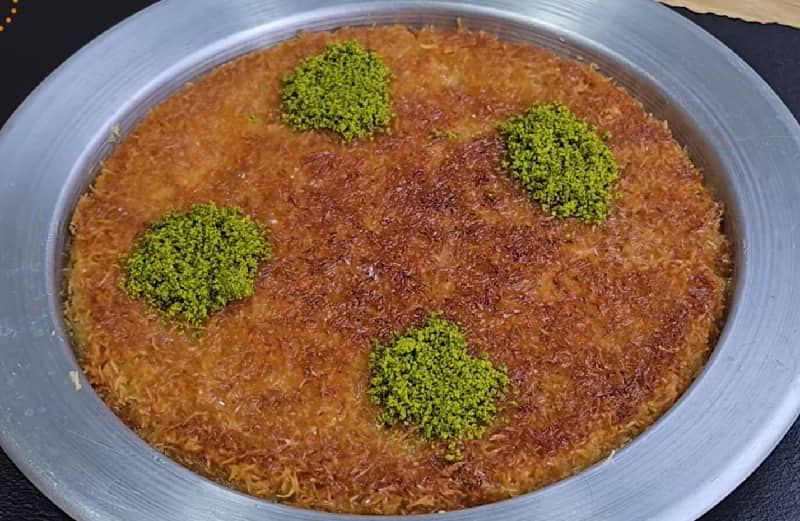
Knafeh, an esteemed dessert originating from Arabic culinary heritage but widely embraced in Turkish gastronomy, showcases a delicate interplay of flavors and textures. Its foundation lies in spun pastry known as kataifi, delicately soaked in a sweet syrup called attar, creating a delectable balance of sweetness. Traditionally, it features layers of cheese, though regional variations may incorporate ingredients like clotted cream, pistachios, or assorted nuts, each adding their unique flair. The cheese lends a creamy richness that contrasts harmoniously with the crispness of the pastry and the sweetness of the syrup. Knafeh stands as a testament to the diverse and vibrant culinary traditions of the Middle East and Turkey, celebrated for its indulgent taste and exquisite presentation. Whether enjoyed as a decadent dessert or a delightful treat, knafeh continues to captivate palates with its enchanting combination of flavors and textures.
Tres Leches Cake

Tres leches cake, also known as trileçe in Turkish, is a decadent sponge cake infused with a blend of three milks: evaporated milk, condensed milk, and whole milk. While originating in Latin America, it has gained popularity in Turkey as well. The essence of Tres Leches Cake lies in its sponge cake base, meticulously soaked in the trio of milks, giving rise to its name, "tres leches" in Spanish. This infusion transforms the cake into a delectable dessert with a velvety, pudding-like texture. Following the milk bath, the cake is adorned with a luscious layer of whipped cream, and at times, embellished with fresh strawberries or a hint of cinnamon. Tres leches cake epitomizes the art of culinary fusion, blending diverse flavors and traditions to create a sumptuous treat that delights palates across continents.
Marron Glacé
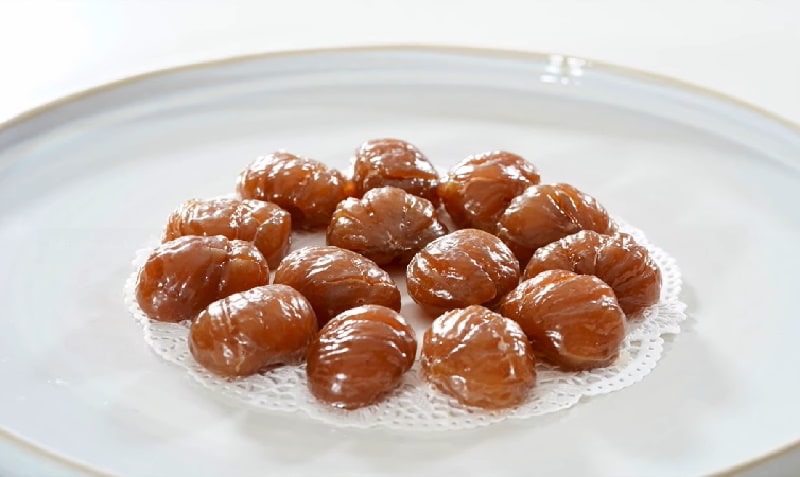
Marron glacé, a confection with its roots in France, features chestnuts candied in sugar syrup and glazed to perfection. In Turkey, particularly in Bursa, it takes on a local specialty known as kestane şekeri. These sweet treats, marrons glacés, serve as a versatile ingredient in numerous desserts, adding a rich, nutty sweetness to various culinary creations. Additionally, they are enjoyed as standalone indulgences, offering a delightful blend of textures and flavors. Marron glacé's journey from France to Turkey showcases the global exchange of culinary delights, each locale adding its unique twist to this beloved sweet. Whether savored on their own or incorporated into decadent desserts, marrons glacés remain a symbol of exquisite craftsmanship and timeless indulgence, captivating taste buds across cultures.
Dondurma
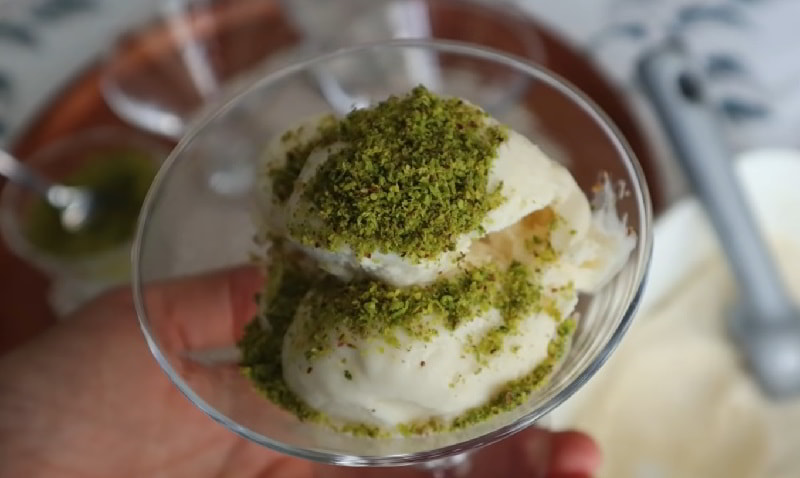
Dondurma, a Turkish delicacy, is a unique variant of ice cream flavored with mastic. Its traditional recipe comprises cream, whipped cream, salep (derived from the ground tuber of an orchid), mastic (a resin from the mastic tree), and sugar. Hailing from the city and region of Kahramanmaraş, it's commonly referred to as maraş dondurma. This specialty ice cream boasts a distinctive chewy texture and rich flavor profile, attributed to the use of salep and mastic. Dondurma holds a special place in Turkish culinary heritage, celebrated for its indulgent taste and cultural significance. Whether enjoyed on a hot summer day or as a delightful dessert after a hearty meal, dondurma offers a memorable sensory experience that captivates both locals and visitors alike, showcasing the ingenuity and creativity of Turkish cuisine.
Basbousa
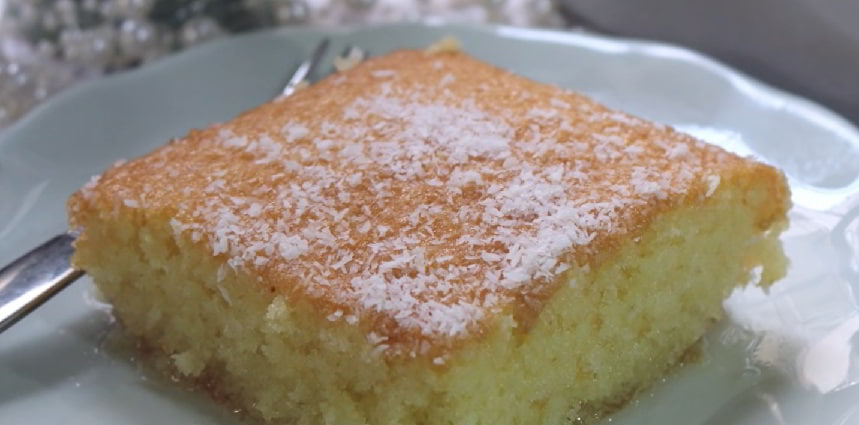
Basbousa, a delectable semolina cake soaked in syrup, traces its origins to Egypt. In Turkish culinary circles, it's celebrated under the name revani. The preparation involves baking a semolina batter in a sheet pan until golden brown. Once out of the oven, the cake is generously drenched in a sweet syrup infused with flavors like orange flower water, rose water, or a simple syrup. Traditionally, it's cut into diamond or square shapes, offering a delightful visual appeal. Basbousa, or revani, embodies a harmonious blend of textures and flavors, with the moistness of the syrup-infused cake complementing the subtle floral notes. This beloved dessert holds a cherished place in both Egyptian and Turkish cuisines, captivating palates with its irresistible sweetness and aromatic essence, making it a delightful treat for any occasion.
Lokma

Lokma, a beloved dessert in Turkish cuisine, consists of leavened dough balls deep-fried to golden perfection and then soaked in syrup or honey, occasionally adorned with cinnamon or other flavorful toppings. This delectable treat manifests in various forms across Turkey. Dessert lokma is crafted from a mixture of flour, sugar, yeast, and salt, fried until golden, and then luxuriously bathed in syrup or honey. In certain regions, lokma is enjoyed in unconventional ways, such as pairing it with cheese akin to breakfast bagels. İzmir lokması boasts a distinctive doughnut shape with a central hole, while the spherical variant is known as Palace Lokma. Each rendition of lokma offers a unique sensory experience, blending indulgent sweetness with satisfying textures, making it a cherished delight in Turkish culinary traditions.
Galaktoboureko
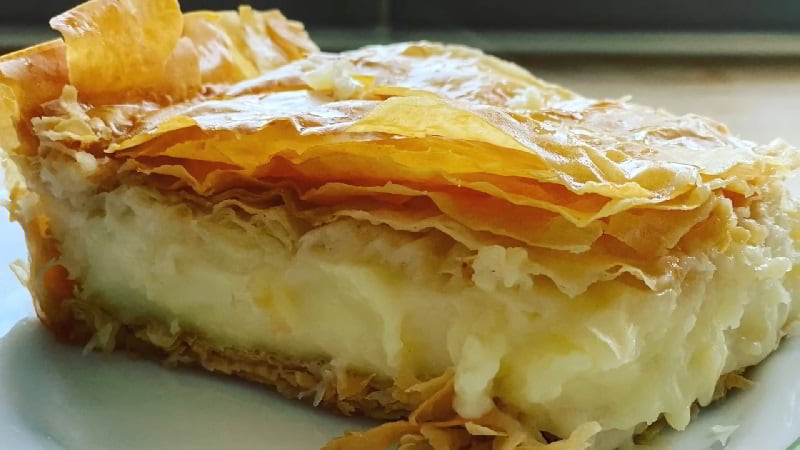
Galaktoboureko, referred to as Laz böreği in Turkish, is a delectable dessert featuring a custard filling enveloped in layers of filo pastry. In contrast to the regular version, Laz böreği incorporates muhallebi, a creamy pudding, rather than semolina custard, lending it a distinctively smooth texture. This dessert holds particular popularity in the Rize and Artvin provinces of the Black Sea Region, which are renowned as the indigenous lands of the Laz people. The name "Laz böreği" underscores its association with Laz culture, highlighting the regional influence on culinary traditions. Galaktoboureko has been embraced and adapted in Turkish culinary spaces, showcasing the dynamic interplay of cultural influences. Renowned for its rich, creamy indulgence and delicate pastry layers, Laz böreği serves as a cherished delight, reflecting the diverse tapestry of flavors and traditions found in the Black Sea Region.
Muhallebi

Muhallebi, a creamy milk pudding, is a beloved dessert enjoyed throughout Turkey and the Middle East. This delectable treat is typically crafted from a simple yet satisfying combination of rice, sugar, milk, and either rice flour, starch, or semolina. Its smooth texture and delicate sweetness make it a favorite among dessert enthusiasts, offering a comforting indulgence that is both satisfying and nostalgic. Muhallebi's popularity spans across various cultures and regions, serving as a versatile canvas for culinary creativity. Whether served warm or chilled, garnished with nuts or drizzled with syrup, muhallebi delights the palate with its creamy richness and subtle flavors. As a timeless classic in Turkish and Middle Eastern cuisine, muhallebi continues to captivate generations with its irresistible charm and comforting taste, making it a cherished dessert for all occasions.
Qurabiya

Qurabiya, also spelled as "kurabiye" or "kourabiedes," is a traditional shortbread cookie with roots in various regions including Turkey, Greece, and other parts of the Middle East. These cookies are often associated with festive occasions such as Eid al-Fitr or Christmas. Qurabiya typically consists of a buttery dough made with flour, sugar, and ground nuts such as almonds, walnuts, or pistachios. The dough is shaped into small rounds or crescents, sometimes with the addition of spices like cardamom or vanilla for flavor. After baking to a golden hue, the cookies are dusted generously with powdered sugar, adding a delightful sweetness and a snowy appearance. Qurabiya's rich, nutty flavor and crumbly texture make it a beloved treat for celebrations and gatherings, enjoyed with a cup of tea or coffee among family and friends.
Tulumba
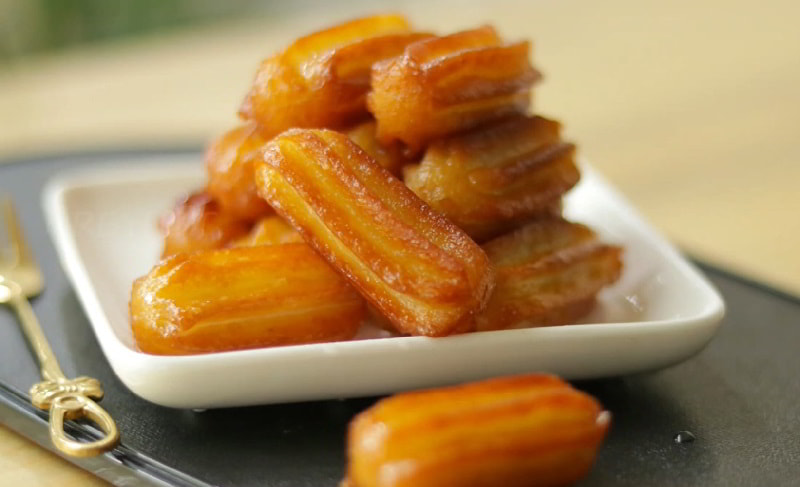
Tulumba, a beloved dessert in Turkish cuisine, is akin to elongated doughnuts or churros. Its preparation involves piping choux pastry dough into hot oil, creating crispy, hollow tubes. Once fried to a golden hue, the tulumba is immersed in a sweet syrup infused with flavors like lemon, rosewater, or orange blossom water, imparting a delightful aroma and sweetness. Often served chilled, this dessert is adorned with chopped nuts or a sprinkle of cinnamon for added flavor and texture. With its combination of crunchy exterior and tender interior soaked in syrup, tulumba presents a pleasing contrast of textures and flavors, making it a cherished treat for celebrations and gatherings across the Middle East and the Mediterranean.
Rosette
-1713560527.jpg)
Rosette cookies, also known as "demir tatlısı" in Turkish cuisine, are delicate fritters crafted using special iron molds. These cookies boast a crispy texture and intricate lacy patterns, adding to their allure. The batter, composed of wheat flour, milk, sugar, salt, and eggs, is carefully prepared and then fried to perfection. As they cook, the batter forms into beautiful, flower-like shapes, creating an eye-catching presentation. Rosette cookies are enjoyed for their light and crispy texture, making them a delightful treat for various occasions. In Turkish culinary tradition, demir tatlısı holds a special place, cherished for its simplicity and irresistible taste. Whether enjoyed on their own or paired with a cup of tea or coffee, these cookies offer a delightful indulgence that is loved by many across cultures.
Kazandibi
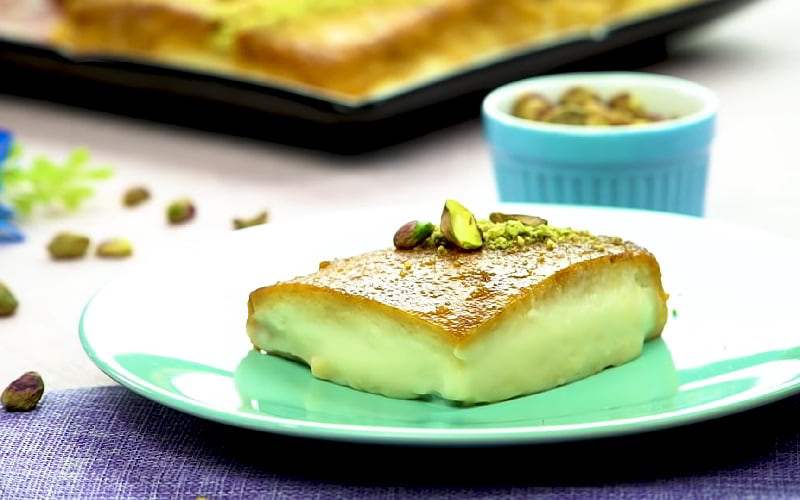
Kazandibi, also known as "kazan dibi," is a renowned Turkish dessert cherished for its caramelized milk pudding. This delectable treat has its origins traced back to the kitchens of the Ottoman Palace, where it was perfected and became a beloved delicacy. Today, kazandibi stands as one of the most beloved and iconic desserts in Turkish cuisine. The name "kazandibi" translates to "bottom of the cauldron," referencing the golden-brown crust that forms at the base of the pot during the cooking process. This signature feature adds a delightful crunch to the creamy pudding, enhancing its texture and flavor. Whether enjoyed warm or chilled, kazandibi delights dessert enthusiasts with its rich, indulgent taste and historical significance, making it a cherished part of Turkish culinary heritage.
Ashure
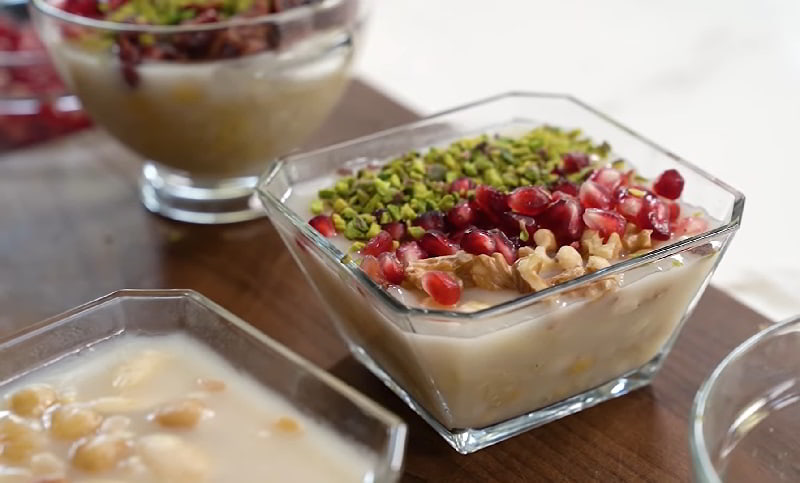
Ashure, also known as "Noah's Pudding," holds a special place in Turkish culinary and cultural traditions. This cherished dessert is a sweet porridge crafted from a diverse array of ingredients, including dried fruits, legumes, grains, and nuts like wheat berries, chickpeas, figs, apricots, raisins, and walnuts. Cooked in abundance, ashure is shared generously with loved ones during the Islamic month of Muharram, particularly on the 10th day known as Ashura, a significant date in Islamic history. The recipe varies across regions and households, with each cook adding their personal touch. After simmering the ingredients, sugar and spices like cinnamon or cloves are introduced for flavor. Pomegranate seeds, symbolizing hope, often adorn the dish upon serving, alongside coconut flakes or powdered sugar. Beyond its delightful taste, ashure embodies the spirit of community and compassion, reinforcing the values of unity and goodwill in Turkish culture through the act of sharing.
Tavukgöğsü
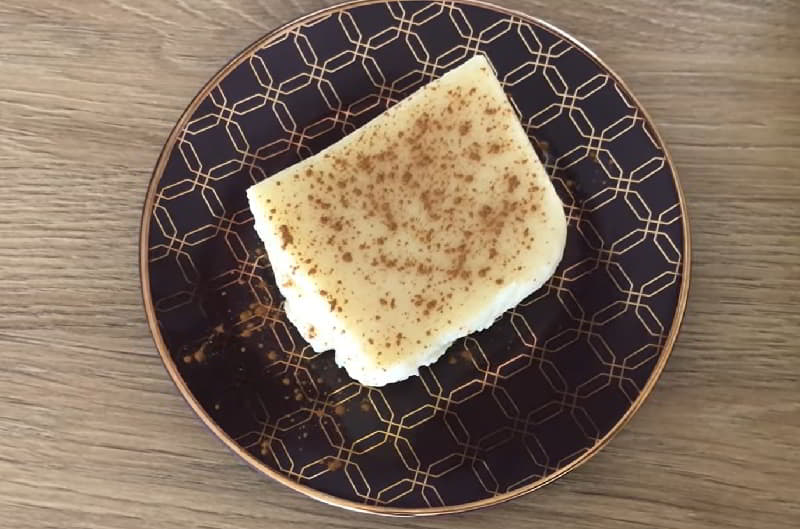
Tavukgöğsü, a unique Turkish milk pudding, features shredded chicken breast as its key ingredient. Originating from the Topkapı Palace, where it was savored by Ottoman sultans as a delicacy, tavukgöğsü has earned its place as a renowned dish in Turkey. The combination of tender chicken breast with milk, sugar, and rice flour results in a creamy and subtly savory dessert. Despite its unusual main component, tavukgöğsü has become a beloved part of Turkish cuisine, appreciated for its delicate flavor and smooth texture. This historical delicacy showcases the culinary ingenuity of the Ottoman Empire, transcending centuries to remain a cherished treat enjoyed by people across Turkey today.
Sesame Seed Candy
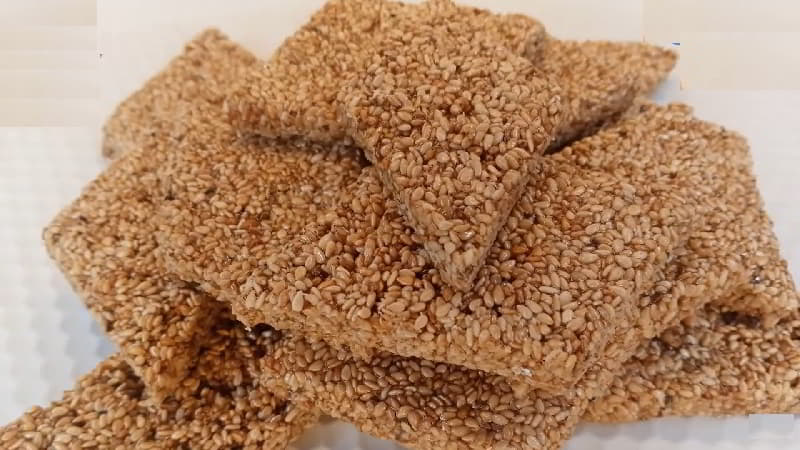
Sesame seed candy, a confection found across regions from the Middle East to East Asia, is crafted from sesame seeds and sweeteners like sugar or honey, compressed into bars or balls. Its popularity extends through various cultures, including Turkish cuisine. The texture of sesame seed candy ranges from chewy to crisp, offering a delightful contrast of flavors and mouthfeel. In Turkey, this treat is appreciated for its nutty sweetness and versatility, often enjoyed as a snack or dessert. Whether chewy or crunchy, sesame seed candy showcases the enduring appeal of sesame seeds in culinary traditions worldwide, adding a touch of richness and flavor to sweet treats enjoyed by people across diverse cultures and continents.
Nut Roll
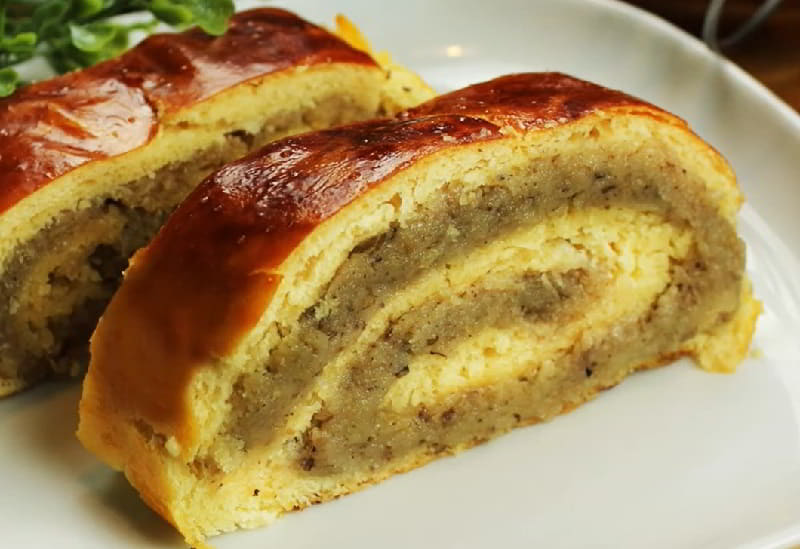
A nut roll, a beloved pastry in Turkish cuisine, comprises a sweet yeast dough, typically enriched with milk, rolled out thinly and spread with a filling of ground nuts and sweetener like honey. Once filled, the dough is carefully rolled into a log shape. This log can be left long and straight or often formed into a horseshoe shape before being brushed with egg wash, baked to perfection, and sliced crosswise. Nut rolls share similarities with jelly rolls (Swiss rolls) but typically feature more layers of dough and filling. They also bear resemblance to strudels, though with fewer and less delicate dough layers. Common fillings include ground walnuts or poppy seeds, contributing to the pastry's nutty richness and delightful sweetness, making it a cherished treat enjoyed by many in Turkish culinary traditions.
Boyoz

Boyoz, a pastry with roots in Sephardic Jewish cuisine, is closely associated with İzmir, Turkey, where it remains a specialty prepared according to the original recipe. The dough for boyoz consists of flour, sunflower oil, and a touch of tahini, all mixed by hand and left to rest for several intervals. After kneading, flattening, and shaping the dough into rolls, it undergoes a final resting period before being cut into small balls and marinated in vegetable oil. These balls are then baked in high-temperature ovens, resulting in a pastry with a soft, layered texture reminiscent of millefeuille. Boyoz can be enjoyed plain or filled with savory ingredients like cheese or spinach. With its unique preparation method and distinctive flavors, boyoz remains a beloved delicacy in İzmir, preserving its cultural and culinary heritage for generations to come.
Macun

Macun, also referred to as Macun şekeri in Turkish, stands as a tender, sweet, and lively Turkish toffee paste, often relished as a favored street indulgence. This delightful confection boasts versatility with an array of herbs and spices infused, offering a spectrum of flavors. Its roots harken back to the seasoned concoctions of Mesir macunu, an age-old herbal paste from Turkey's classical antiquity. Initially valued for its medicinal attributes in ancient times, macun has transitioned into a cherished epicurean delight. Traditionally, macun is served in a circular tray, featuring segregated compartments to highlight its diverse flavor profiles—a presentation style that endures to the present era. The consumption of macun endures as a treasured facet of Turkish culture, symbolizing the nation's rich culinary legacy and enduring customs.
Kadayıf
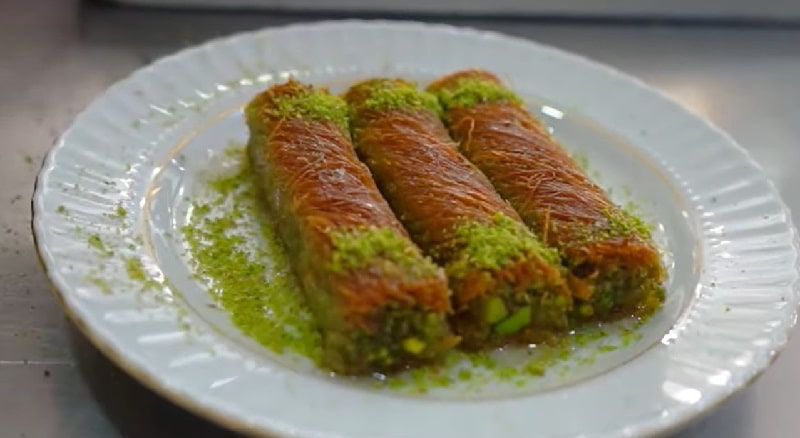
Kadayıf, a beloved dessert in Turkish cuisine, traces its roots to the Middle Eastern culinary tradition. The preparation involves pouring liquid wheat dough onto a rotating hot plate, followed by the addition of sweeteners, before baking or frying the mixture to perfection. This versatile treat can be utilized as a base for pudding or transformed into noodles, offering a diverse array of culinary possibilities. With various types of kadayıf available, each boasting its unique texture and preparation method, there's something to suit every palate. Whether savored on its own or incorporated into other desserts, kadayıf delights with its sweet, delicate flavor and embodies a rich cultural heritage cherished by generations.
Ekmek Kadayıfı
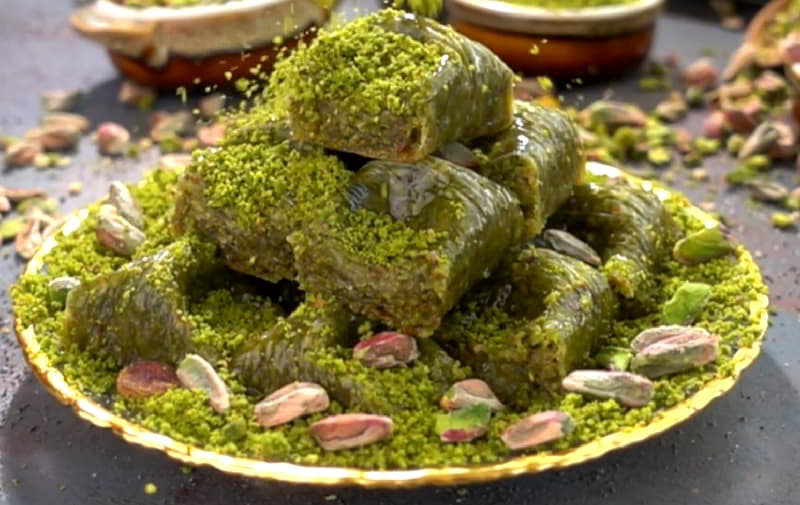
Ekmek kadayıfı, a specialty dessert in Turkish cuisine, shares roots with regions historically part of the Ottoman Empire. Its name, translating to "Kadayıf made of ekmek (Turkish bread)," hints at its preparation method. To craft this dessert from scratch, a piece of bread is delicately hollowed out to create a bread bowl. If the bread is too fresh, it may be oven-dried to optimize its texture. Next, şerbet is poured over the prepared bread, ensuring thorough absorption. As the bread soaks up the şerbet, it softens, ready to be filled with kaymak before serving. For an indulgent twist, the dessert is inverted, transforming into ice cream-stuffed ekmek kadayıfı. This elaborate dessert highlights the ingenuity of Turkish culinary traditions, offering a delightful blend of flavors and textures that captivate the palate.
Güllaç
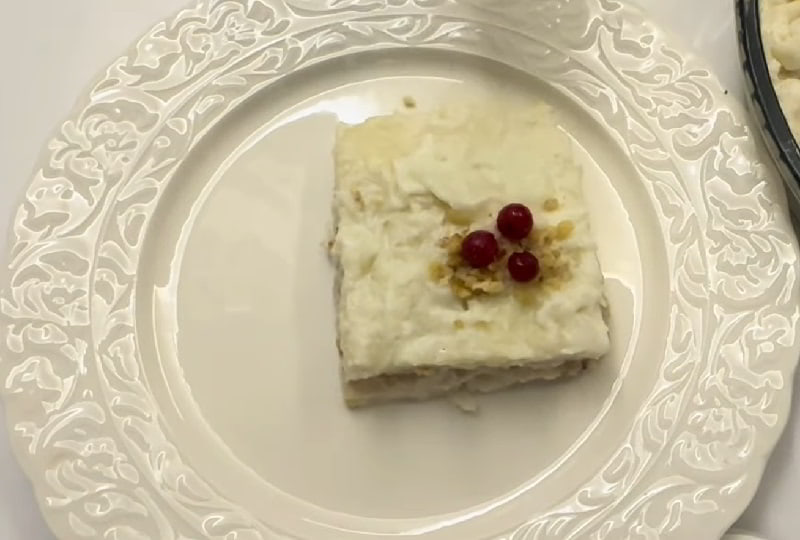
Güllaç, a cherished Turkish dessert, combines milk, rose water, pomegranate, and a unique type of pastry. This delicacy holds special significance, particularly during Ramadan, where it is commonly enjoyed. The dessert is characterized by its light and refreshing qualities, making it a favored choice for breaking the fast during this holy month. Güllaç's preparation involves layering thin sheets of the special pastry with a mixture of milk and rose water, creating a delicate and aromatic treat. Pomegranate seeds are often added for a burst of color and flavor, enhancing the overall appeal of the dessert. With its symbolic importance and delightful taste, güllaç serves as a comforting and festive indulgence, bringing joy and sweetness to gatherings and celebrations throughout Ramadan and beyond.
Şekerpare
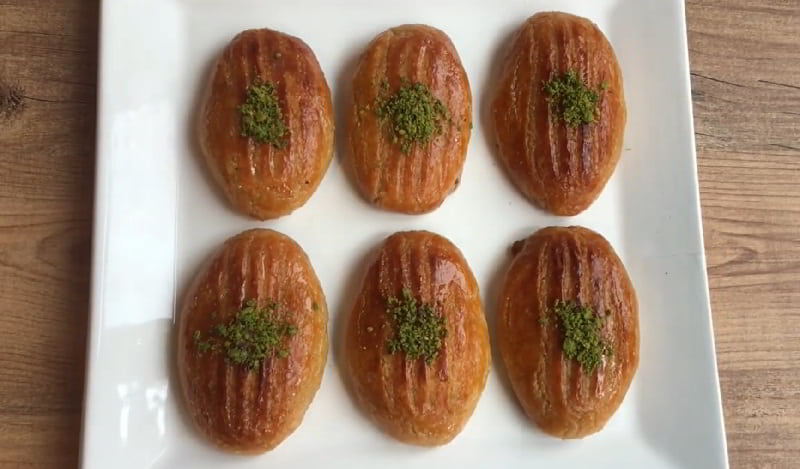
Şekerpare, translating to "piece of sugar," stands among the beloved desserts in Turkish cuisine. This delicacy entails crafting soft balls of almond-based pastry, which are then baked to perfection. Following baking, these delectable treats are dipped in a thick, optionally lemon-flavored sugar syrup, infusing them with sweetness and enhancing their texture. Şekerpare is celebrated for its tender, melt-in-your-mouth consistency and indulgent sweetness. With almonds imparting a rich flavor and the sugar syrup providing a delightful finish, şekerpare captivates taste buds with every bite. Whether enjoyed as a delightful treat with tea or coffee or savored as a sweet ending to a meal, şekerpare remains a cherished part of Turkish culinary heritage, embodying the country's passion for delectable desserts.
Pestil
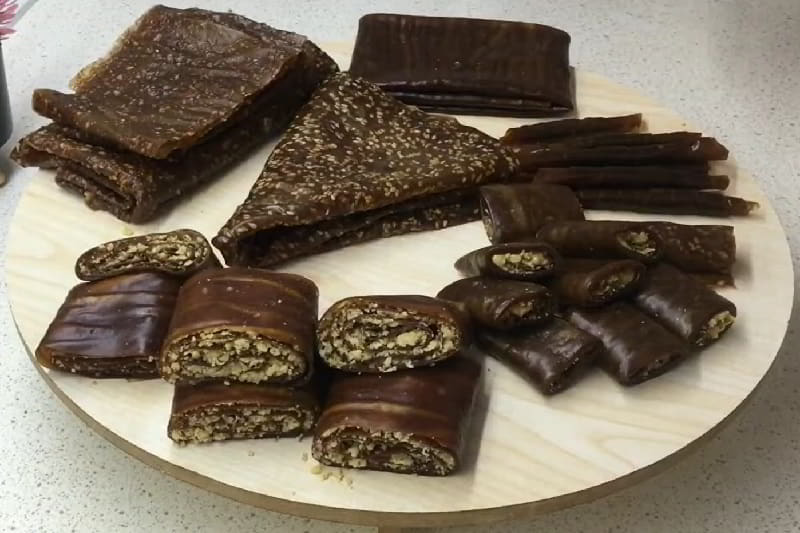
Pestil is a traditional Turkish fruit leather made from concentrated fruit pulp, usually grape or apricot, and sometimes mixed with nuts or spices. The fruit is boiled, then strained to remove seeds and skins. The resulting puree is spread thinly onto trays and dried in the sun or oven until it becomes a firm, chewy sheet. Pestil can be rolled up or cut into squares for storage and snacking. It is often enjoyed as a sweet treat on its own or paired with cheese or nuts. With its natural sweetness and intense fruit flavor, pestil offers a nutritious and delicious way to enjoy seasonal fruits all year round.
Kalburabastı
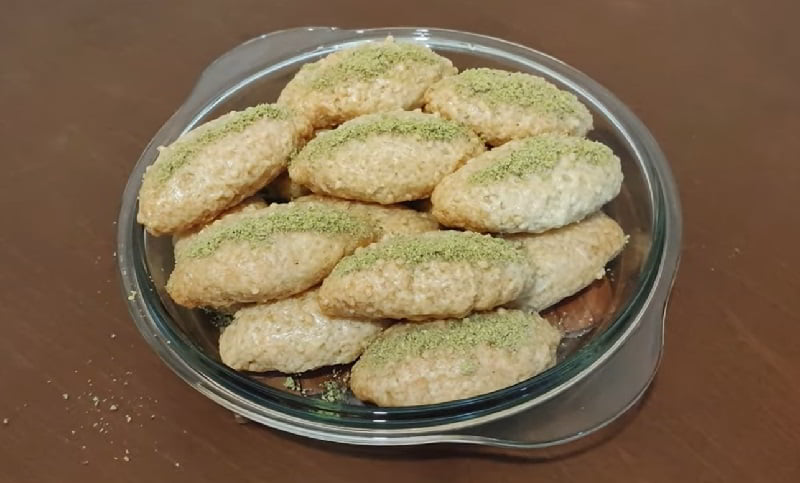
Kalburabastı, also known as kalburabasma or hurma, are delectable pastries soaked in syrup and distinguished by their riddled appearance. These treats hold a special place among the beloved specialties prepared during Islamic holidays such as the three-day celebrations of Eid al-Fitr and Eid al-Adha. Prepared with care and tradition, kalburabastı embodies the essence of festive gatherings, symbolizing joy, abundance, and togetherness. With their intricate texture and sweet syrupy flavor, these pastries are eagerly anticipated and enjoyed by families and friends during these auspicious occasions. The process of making kalburabastı often involves meticulous craftsmanship, ensuring each pastry is infused with the richness of tradition and the warmth of shared celebrations. Whether savored as a delightful dessert or offered as a gesture of hospitality, kalburabastı adds a touch of sweetness and tradition to the festivities, creating cherished memories that endure for years to come.
Kabak Tatlısı
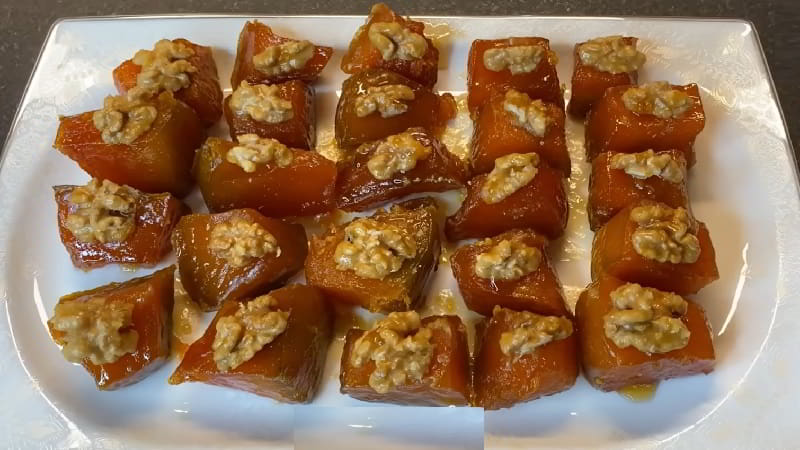
Kabak tatlısı, translating to "pumpkin dessert" in Turkish, is a delightful treat in Turkish cuisine, especially popular during the winter season. To create this dessert, peeled and diced pumpkin is cooked until tender, often with a sprinkling of sugar to create candied pumpkin. Some recipes also incorporate milk for added richness. Once cooked, the dish is garnished with chopped walnuts and drizzled with tahini or kaymak, a creamy dairy product. This combination of sweet pumpkin, crunchy nuts, and creamy toppings offers a delightful contrast of flavors and textures. Kabak tatlısı is enjoyed for its comforting warmth and seasonal appeal, making it a beloved dessert choice for cozy winter gatherings and festive occasions. Its texture has been likened to taffy, adding to its allure and making it a favorite indulgence for dessert lovers in Turkey.
Mesir Macunu
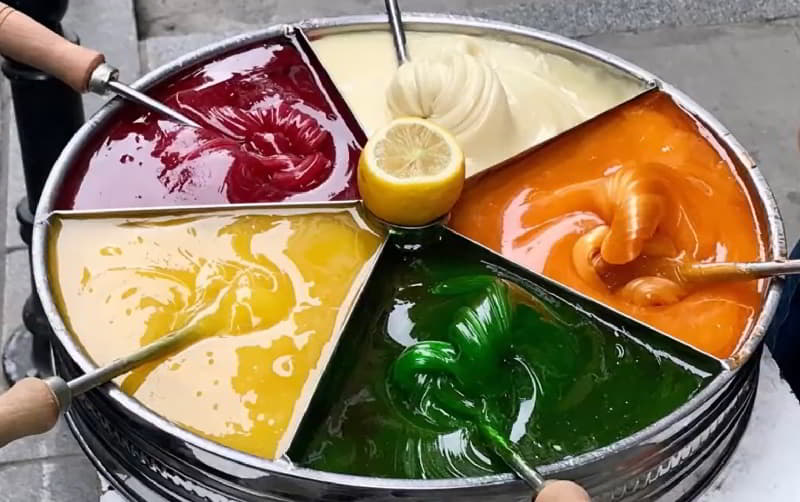
Mesir Macunu is a traditional Turkish sweet paste associated with the city of Manisa. Originally formulated as a herbal remedy by Hafsa Sultan, the mother of Sultan Süleyman the Magnificent, it was distributed to the public as a cure during a period of widespread illness. Over time, it evolved into a sweet confection made from a blend of over forty different spices, herbs, and fruits. The paste is typically rolled into small balls or wrapped in paper, each containing a mixture of aromatic and flavorful ingredients. Mesir Macunu is not only enjoyed as a tasty treat but also holds cultural significance, especially during the annual Mesir Macunu Festival in Manisa, where it is ceremonially thrown to crowds as a symbol of good luck and health. This beloved Turkish delicacy continues to be treasured for its rich history and unique flavor.
Su Böreği
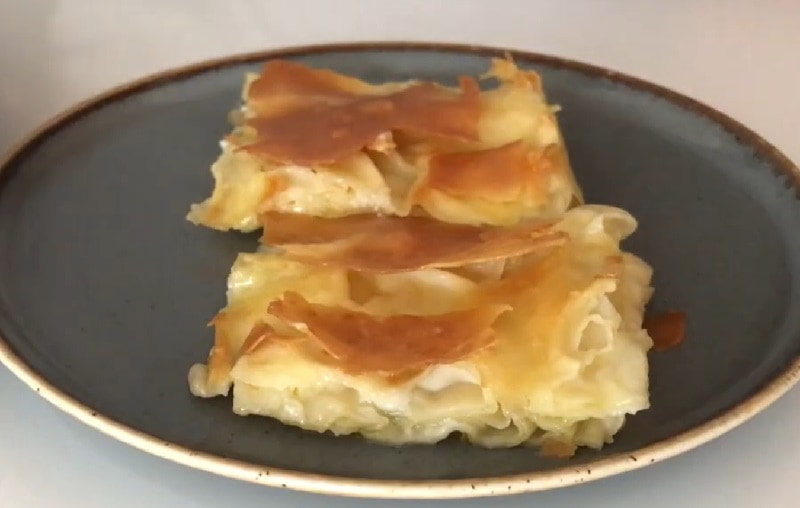
Su böreği stands out as a ubiquitous and beloved type of börek in Turkish culinary tradition. The preparation involves briefly boiling sheets of dough in large pans. Between these layers, a delectable mixture of beyaz peynir (white cheese), parsley, and oil is generously scattered. The assembled börek is then brushed with butter before being placed in a masonry oven to bake to golden perfection. This baking method ensures a crispy exterior while maintaining a moist and flavorful interior. Su böreği's delightful combination of tender dough, creamy cheese filling, and aromatic parsley offers a satisfying culinary experience enjoyed by many. Whether served as a main dish or as part of a spread during gatherings, su böreği remains a cherished staple in Turkish cuisine, celebrated for its comforting flavors and delightful textures.
Cezerye
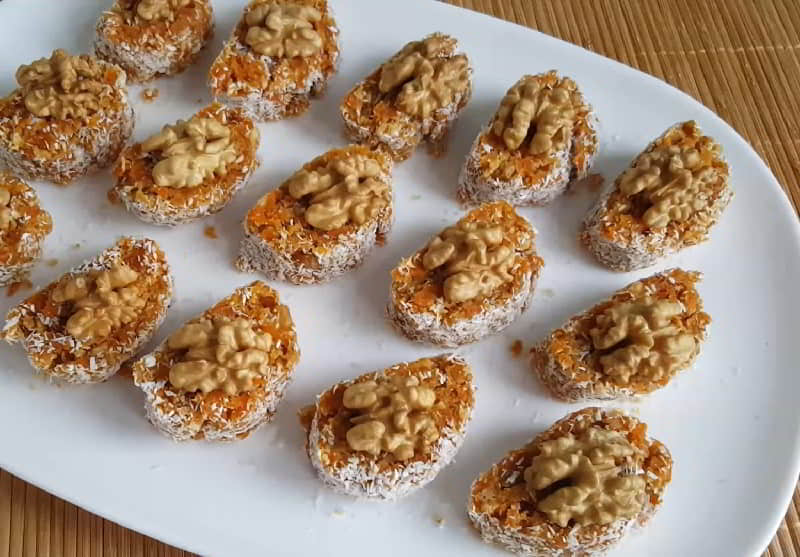
Cezerye, a beloved Turkish dessert with deep cultural roots, combines caramelized carrots, shredded coconut, and an assortment of roasted nuts like walnuts, hazelnuts, or pistachios. Carrots undergo boiling until tender before being roasted with sugar to achieve a luscious caramelization. The addition of coconut powder infuses a delightful tropical sweetness. To enhance texture and richness, a variety of nuts are mixed in, ranging from pistachios to hazelnuts. The resulting mixture is then shaped into small rectangular pieces, offering bite-sized indulgence. This dessert holds significant importance in Turkish culinary traditions, often gracing the table during festive gatherings and special celebrations. Originating from Mersin, Turkey, Cezerye reflects the culinary heritage of the region, celebrated for its harmonious blend of flavors and inviting textures, making it a cherished treat for all occasions.
Supangle
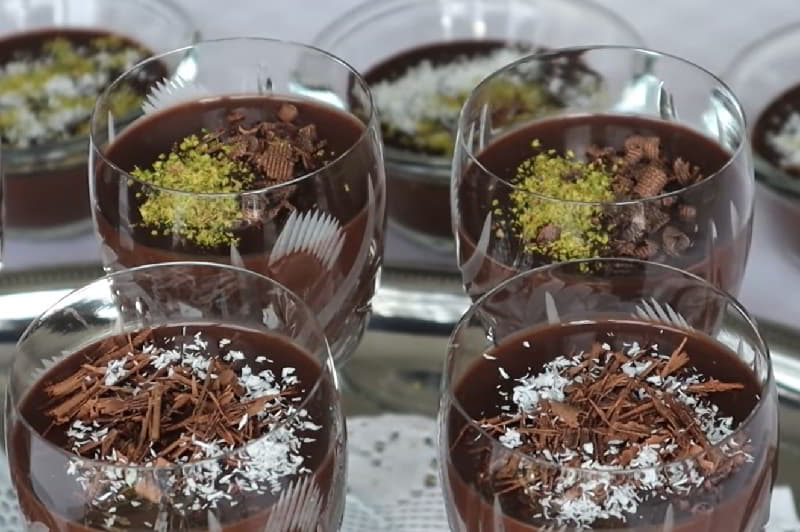
Supangle, also known as sup, is a delectable Turkish chocolate pudding characterized by its layered texture. Crafted from a blend of milk, sugar, flour, and cocoa powder, butter and chocolate are added for richness and depth of flavor. The base layer features pieces of cake, cookies, or biscuits, often utilizing leftovers for resourcefulness. Some recipes incorporate eggs and hazelnut chocolate spread to enhance taste and creaminess. Supangle is typically adorned with garnishes such as pistachios, shredded coconut, and chocolate chips, adding visual appeal and additional flavor dimensions. Served chilled, it offers a refreshing and indulgent dessert experience. Increasingly, it is enjoyed alongside ice cream, amplifying its creamy texture and sweetness. Supangle's popularity continues to grow, captivating dessert enthusiasts with its harmonious blend of chocolate richness and delightful toppings.
Torpedo Dessert

Torpedo dessert, or Torpil tatlısı, is a delectable viennoiserie bread roll renowned for its torpedo-like shape. It boasts a buttery and flaky texture that melts in the mouth, making it a favorite among dessert enthusiasts. Unlike traditional pastries, such as croissants, torpedo dessert is crafted from a layered yeast-leavened dough. This dough undergoes a meticulous process called laminating, where it is repeatedly rolled, folded, and layered with butter to create a lusciously flaky texture akin to puff pastry. Once baked, the result is a heavenly treat with a delicate yet indulgent mouthfeel. Typically, torpedo dessert is filled with pastry cream, enhancing its richness and adding a creamy contrast to the crisp exterior. With its distinctive shape and irresistible flavor, torpedo dessert is a cherished indulgence enjoyed in Turkish culinary culture, perfect for satisfying cravings and elevating dessert experiences.
Kemal Pasha Dessert
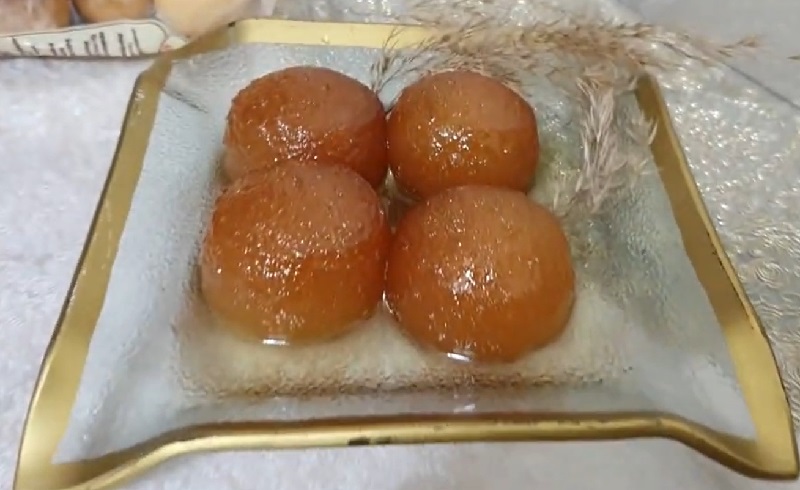
Kemal Pasha dessert, also known as Kemalpaşa tatlısı, holds a special place in Turkish gastronomy. This beloved delicacy is crafted from a dough mixture consisting of flour, unsalted cheese, semolina, egg, water, and baking powder. The dough is expertly shaped into small balls, fried until golden brown, and then bathed in a luscious syrup for flavor. Kemal Pasha dessert is available in both fresh and dried forms, conveniently packaged for enjoyment in servings ranging from 24 to 50 portions. During the winter, it is often served with cream for a comforting and indulgent experience, while in the summer, it pairs perfectly with ice cream, offering a refreshing contrast. Whether savored on its own or accompanied by creamy delights, Kemal Pasha dessert remains a cherished part of Turkish cuisine, renowned for its irresistible flavor and adaptability throughout the year.
Sütlü Nuriye
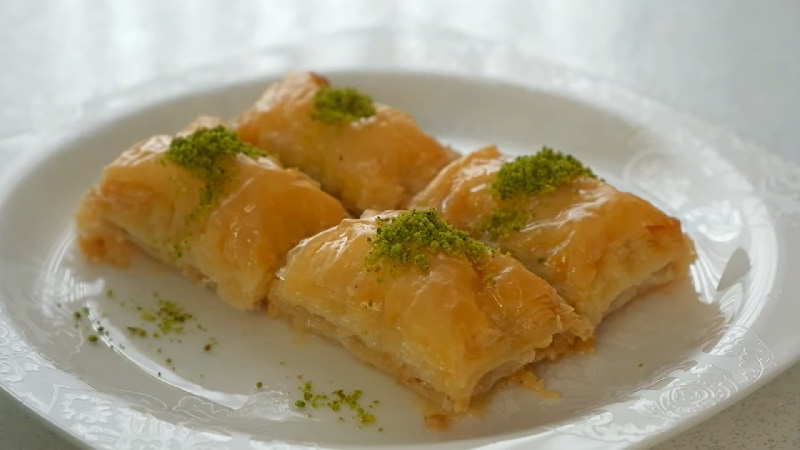
Sütlü Nuriye, known as Milky Nuriye, is a Turkish dessert reminiscent of baklava, distinguished by its use of milk instead of syrup, lending it a distinctive whitish appearance. The name "Nuriye" originates from the Turkish female name, signifying the inclusion of milk in the recipe. Sütlü Nuriye is renowned as a specialty of Diyarbakir, a city in Turkey known for its rich culinary heritage. This dessert offers a delightful variation to the traditional baklava, with the creamy milk imparting a unique flavor and texture. Loved for its indulgent taste and cultural significance, Sütlü Nuriye holds a cherished place in Turkish cuisine, celebrated for its creamy richness and association with the culinary traditions of Diyarbakir.
Şöbiyet

Şöbiyet, a delectable Turkish dessert akin to baklava, features layers of delicate phyllo dough filled with a sumptuous combination of kaymak cheese and nuts, commonly walnut or pistachio. The phyllo dough, known for its thin and flaky texture, serves as the perfect vessel to encase the creamy kaymak cheese and crunchy nuts, creating a harmonious blend of flavors and textures. Once assembled, Şöbiyet is often baked until golden brown, allowing the layers to meld together while achieving a crispy exterior. This indulgent treat is then typically soaked in a sweet syrup, infusing it with additional sweetness and moisture. Loved for its rich taste and luxurious ingredients, Şöbiyet is a beloved dessert in Turkish cuisine, enjoyed on special occasions and gatherings, where its delightful combination of flavors never fails to impress dessert enthusiasts.
Hoşmerim
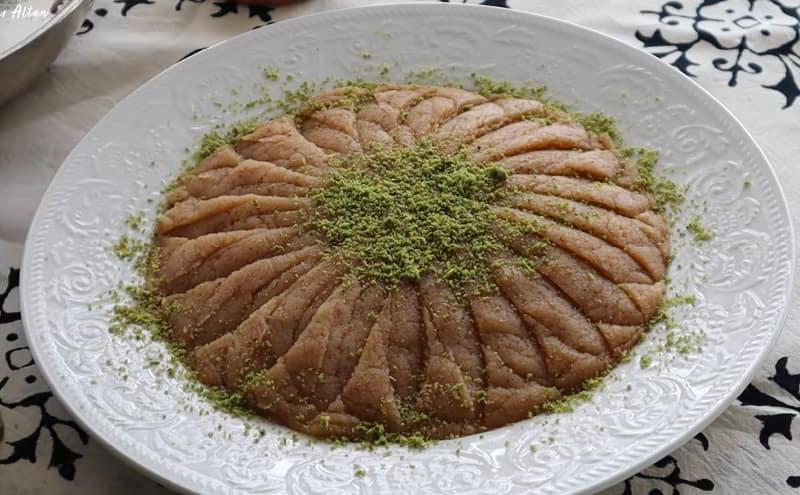
Höşmerim, also known as peynir helva or "cheese halva," is a delightful Turkish dessert often enjoyed as a light after-meal treat. Variations abound across different regions, but traditional recipes typically feature a blend of semolina, powdered sugar, and fresh unsalted cheese. Commercial versions may incorporate additional ingredients like cream, egg, and riboflavin for added richness and texture. Höşmerim is versatile, often served with toppings such as ice cream, honey, or nuts, enhancing its flavor profile and presentation. Its creamy texture and subtle sweetness make it a favorite among dessert enthusiasts, offering a satisfying conclusion to any meal. Whether enjoyed in its traditional form or with modern variations, Höşmerim remains a cherished part of Turkish culinary culture, celebrated for its comforting taste and adaptability to various dining occasions.
Zerde
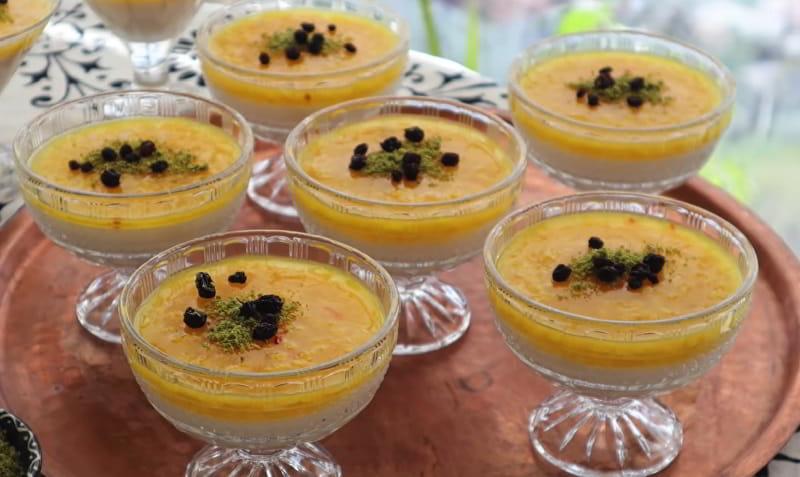
Zerde, a traditional dessert originating from Iraq and Mesopotamia, holds a special place in Turkish culinary traditions. This beloved dish is renowned for being the original rice pudding, distinguished by its vibrant yellow color and delicate floral flavor infused by a generous amount of saffron. Considered a festive delicacy, Zerde is often served at joyous occasions such as weddings, births, and religious celebrations like the first Sunday of the month of Sha'aban, commemorating the birth of the prophet Zakariyya, as well as the first ten days of the sacred month of Muharram. Its cultural significance and delightful taste make Zerde a cherished part of Turkish culinary heritage, celebrated for its ability to bring joy and sweetness to special moments and gatherings.
Pepeçura
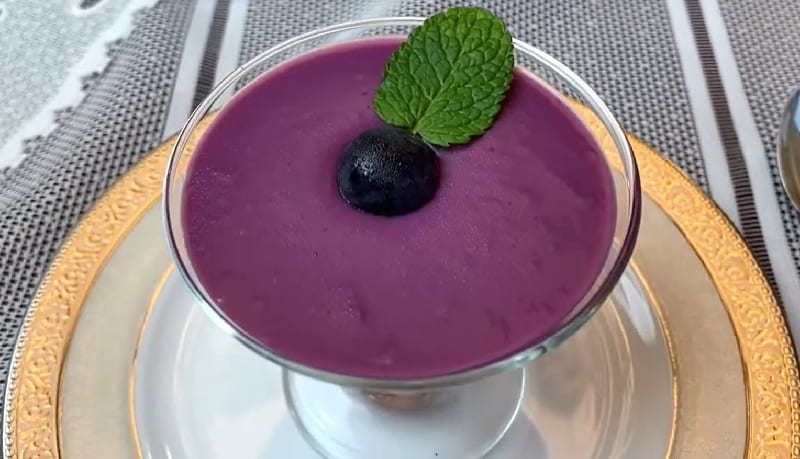
Pepeçura is a delightful pudding hailing from Turkish cuisine, particularly enjoyed in the eastern Black Sea Region. Its preparation involves combining grape must with flour and simmering until thickened to perfection. Often, this delectable treat is enhanced with the addition of almonds, walnuts, and various other nuts, lending it a delightful crunch and rich flavor profile. Grape must, extracted from pressed grapes before fermentation, serves as the primary sweetener, imparting a unique sweetness to the pudding. Pepeçura holds a special place in culinary traditions, especially during grape harvest season when fresh must is abundant. Loved for its comforting taste and association with seasonal celebrations, this grape must pie remains a favorite dessert, cherished for its simplicity and ability to evoke the essence of Turkish culinary heritage.
Şambali
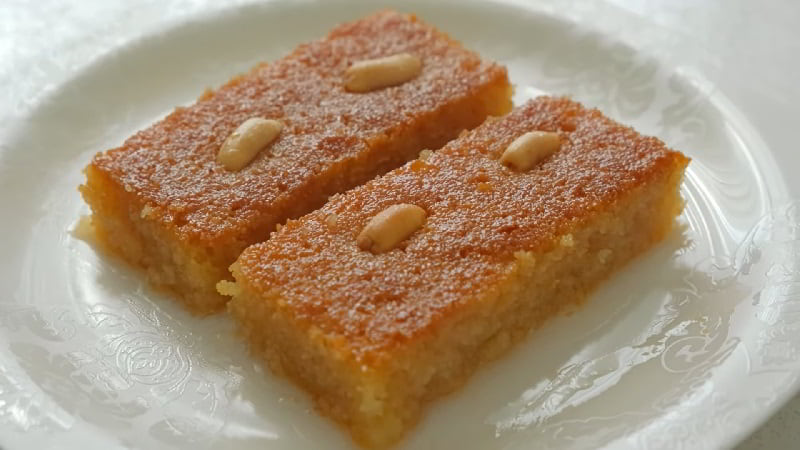
Şambali, a renowned dessert originating from İzmir, holds a prominent place in Turkish culinary culture. Often found being sold by street vendors and at street corners throughout İzmir, Şambali is cherished for its distinctive texture and rich flavor. Unlike the softer and lighter revani, Şambali offers a firmer and more intense indulgence. Its key ingredients include semolina, sugar, and yogurt or milk, blended together to create a delightful harmony of flavors and textures. With its origins deeply rooted in the culinary heritage of İzmir, Şambali has become a beloved treat enjoyed by locals and visitors alike. Whether savored as a sweet delight on its own or paired with a cup of tea or coffee, Şambali remains a cherished symbol of İzmir's vibrant street food culture and is celebrated for its delicious taste and comforting appeal.
Tahini Roll
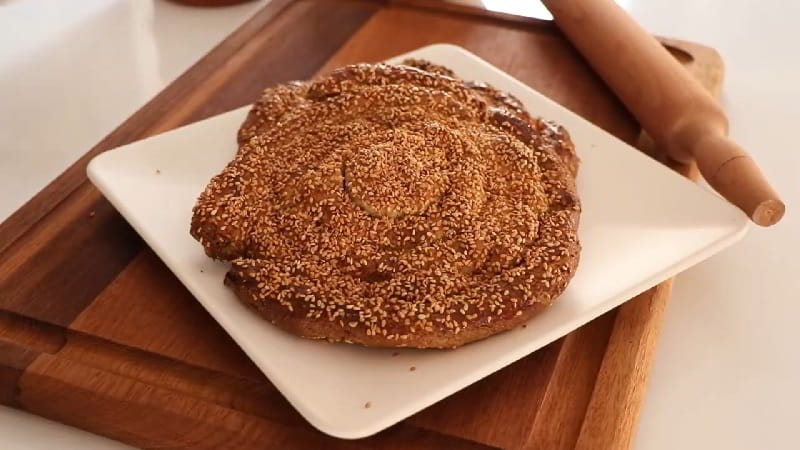
A tahini roll is a tantalizing treat that transcends borders, delighting palates not only in Turkish cuisine but also across Middle Eastern and Mediterranean culinary traditions. This delectable pastry typically features a soft, thinly rolled dough generously slathered with tahini paste—a luscious blend crafted from ground sesame seeds. Sweeteners like honey or sugar may be incorporated into the tahini filling to elevate its flavor profile. Once filled, the dough is meticulously rolled into a log and baked until it achieves a golden brown hue. The result? A heavenly pastry boasting a delightful balance of nutty richness from the tahini and a subtle sweetness from the added sugars. Tahini rolls are adored as both desserts and sweet snacks, perfectly complementing a cozy moment with a cup of tea or coffee. Renowned for their irresistible taste and satisfying texture, these treats have garnered a global following among pastry aficionados.
Keşkül

Keşkül, a beloved delicacy within Turkish cuisine, is a delectable almond-based milk pudding. Typically enjoyed from a bowl with a spoon, this creamy dessert boasts a luscious texture and is often adorned with coconut shavings or pistachio nuts, adding both visual appeal and a delightful crunch. Its off-white hue further enhances its aesthetic appeal, inviting indulgence with every spoonful. Crafted with care and cherished for its rich flavor, Keşkül captures the essence of Turkish culinary heritage. Whether savored as a comforting treat after a meal or as a sweet delight during festive occasions, this almond-infused pudding remains a cherished part of Turkish culinary culture. Renowned for its creamy consistency and nutty undertones, Keşkül is adored by locals and visitors alike, making it a must-try dessert for anyone exploring the vibrant flavors of Turkish cuisine.
Kolompeh

Kolumpe kurabiyesi is a Turkish pastry that offers a delightful twist on a traditional treat called Kolompeh. Made from a blend of wheat flour, dates, walnuts, almonds, pistachios, and vegetable oil, this pastry boasts a rich and flavorful profile. Resembling a pie, it is filled with a tantalizing mixture of ingredients, creating a symphony of tastes and textures with each bite. Kolumpe kurabiyesi showcases the culinary creativity of Turkish cuisine, incorporating a diverse array of flavors to craft a unique and satisfying dessert. Whether enjoyed as a snack or dessert, kolumpe kurabiyesi is sure to captivate taste buds and leave a lasting impression with its delicious combination of ingredients and cultural significance.
Hoşaf
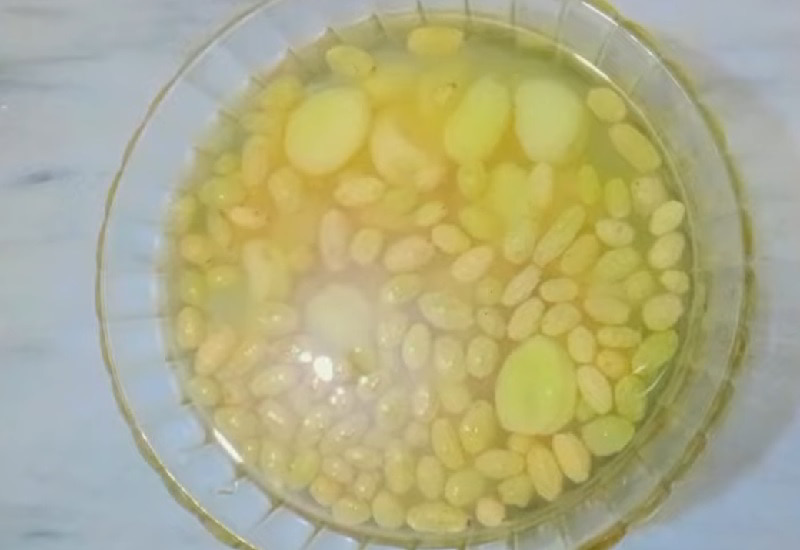
Hoşaf, a traditional Turkish dessert, features a delightful blend of dried fruits such as raisins, dried prunes, apricots, and figs, simmered in water with a hint of sugar and sometimes infused with cinnamon or cloves for added flavor. After boiling, the mixture is left to cool, resulting in a refreshing and sweet concoction. Hoşaf is commonly enjoyed alongside dishes that lack juices, such as pilav and makarna, akin to cacık. Its consumption holds particular significance during Ramadan, where it is cherished as a cherished tradition, offering a sweet and nourishing accompaniment to iftar meals. With its simple yet satisfying preparation and versatile serving options, hoşaf remains a beloved dessert throughout Turkey, bringing comfort and joy to gatherings and celebrations alike.
İzmir Bomb Kurabiye
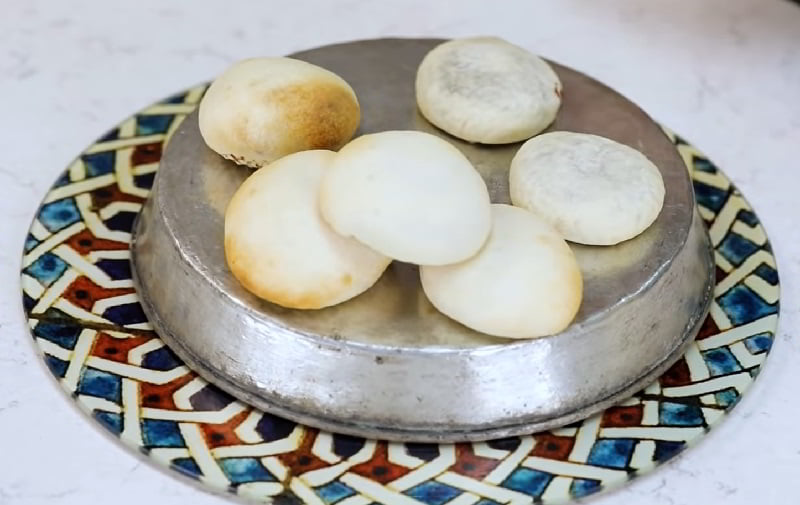
İzmir Bombası, also known as Praline Stuffed Cookies, is a delectable treat hailing from Turkish cuisine, specifically originating in İzmir. These cookies feature a crispy outer layer of dough, encapsulating a luscious filling of chocolate spread. The name "İzmir Bombası" pays homage to its city of origin. With a tantalizing combination of textures, these cookies offer a delightful contrast between the crunchy exterior and the smooth, creamy filling nestled within. The fluid cream filling adds a burst of flavor that harmonizes perfectly with the rich chocolate spread. İzmir Bombası is cherished for its indulgent taste and is enjoyed as a popular dessert or sweet snack across Turkey. Its popularity extends beyond İzmir, captivating taste buds with its irresistible combination of flavors and textures throughout the country.
Lady's Navel

A lady's navel, also known as woman's navel, is a delectable sweet pastry originating from Turkey. These pastries are crafted from balls of choux pastry, each carefully dimpled, deep-fried to a golden perfection, and then generously soaked in syrup. The name "lady's navel" evokes the pastry's distinctive shape, reminiscent of a belly button. With their crisp exterior and syrup-soaked interior, these pastries offer a delightful contrast of textures and flavors. The syrup infusion adds a delightful sweetness, complementing the light and airy choux pastry. Whether enjoyed as a dessert or a sweet snack, lady's navel pastries are beloved for their irresistible taste and unique presentation, making them a cherished treat in Turkish culinary tradition.
Bülbül Yuvası
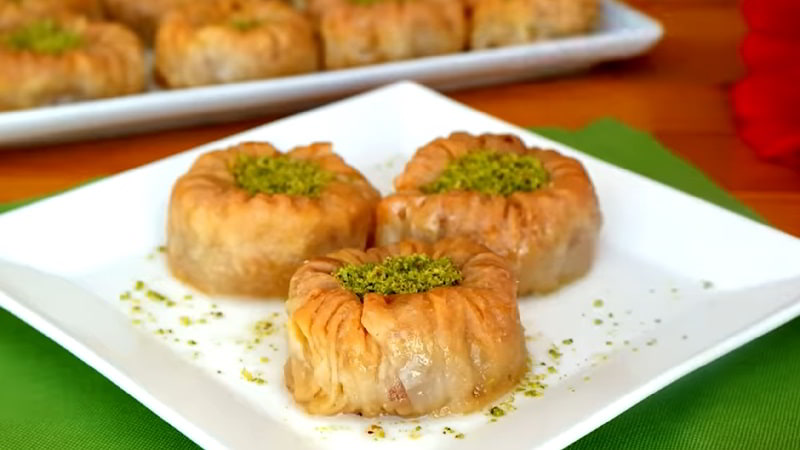
Bülbül yuvası, translating to "nightingale's nest," is a beloved phyllo dough dessert cherished in Turkish culinary tradition. This sweet treat derives its name from its distinctive circular and hollow shape, resembling a bird's nest. Once baked to golden perfection, the warm pastry is delicately drizzled with syrup, infusing it with sweetness and moisture. The hollow center of the pastry is then generously filled with flavorful pistachios, adding a delightful crunch and nuttiness to each bite. Bülbül yuvası offers a harmonious blend of textures and flavors, with the crispy phyllo dough complementing the rich sweetness of the syrup and the earthy richness of the pistachios. Whether enjoyed as a dessert or a sweet indulgence, Bülbül yuvası delights the palate with its unique presentation and delectable taste, making it a cherished delicacy in Turkish cuisine.
Ayva Tatlısı
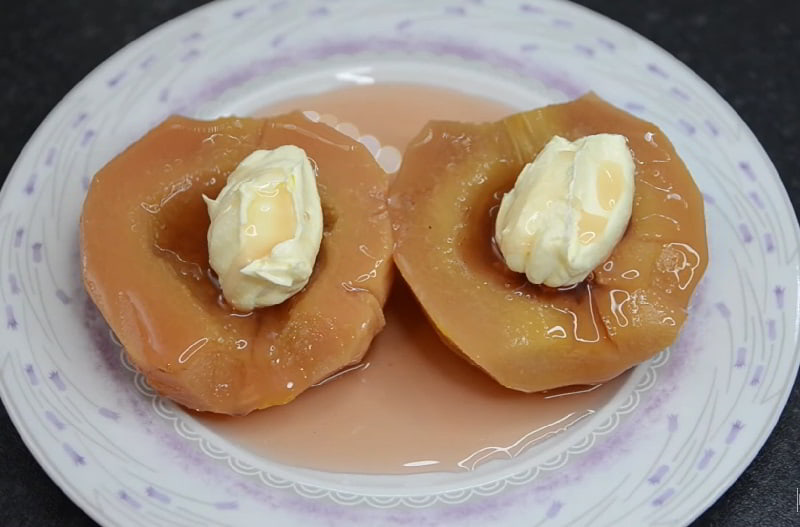
Ayva tatlısı, a beloved dessert in Turkish cuisine, features quince as its star ingredient. The quince is meticulously prepared by either boiling it in water or baking it in the oven along with cloves, creating a tender and flavorful base. Once cooked to perfection, the quince is infused with a sweet syrup and filled with a delectable mixture of apple or quince meal, along with plump raisins for added sweetness. To elevate its richness, the dessert is generously topped with kaymak, a creamy dairy product akin to clotted cream. Served as halves with the inner portion slightly carved out, Ayva tatlısı delights the senses with its warm and comforting flavors, making it a popular choice across Turkey, especially during the chilly winter months. Whether enjoyed warm or cold, this dessert remains a cherished part of Turkish culinary tradition.
Flour Kurabiye
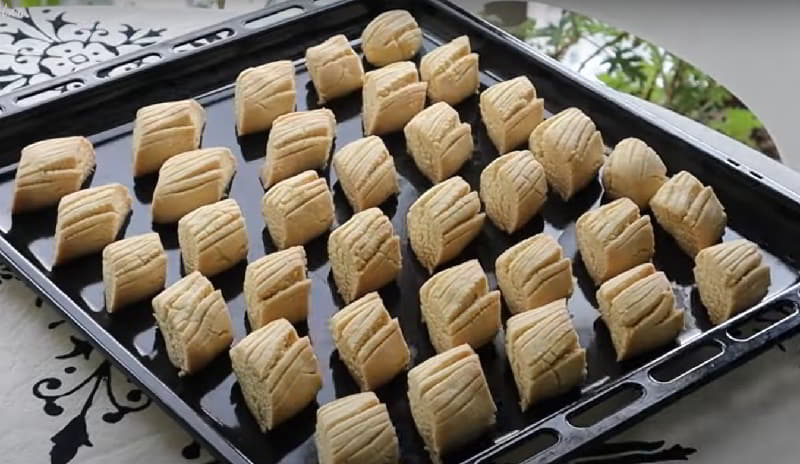
Flour kurabiye, a traditional Turkish cookie, boasts a simple yet delicious combination of ingredients. Crafted from butter, sunflower oil (or another mild-flavored oil), baking powder, and of course, flour, this delightful treat offers a satisfying crunch with every bite. Often enhanced with the subtle sweetness of vanilla powder, which serves as a popular alternative to vanilla extract in Turkish baking, flour kurabiye embodies the essence of homemade goodness. Its straightforward recipe allows the rich flavors of butter and flour to shine, creating a classic cookie that is beloved across Turkey. Perfect for enjoying with a cup of tea or coffee, flour kurabiye is a testament to the beauty of simplicity in culinary delights, offering a delightful taste of Turkish tradition with every delectable bite.
Orcik Candy
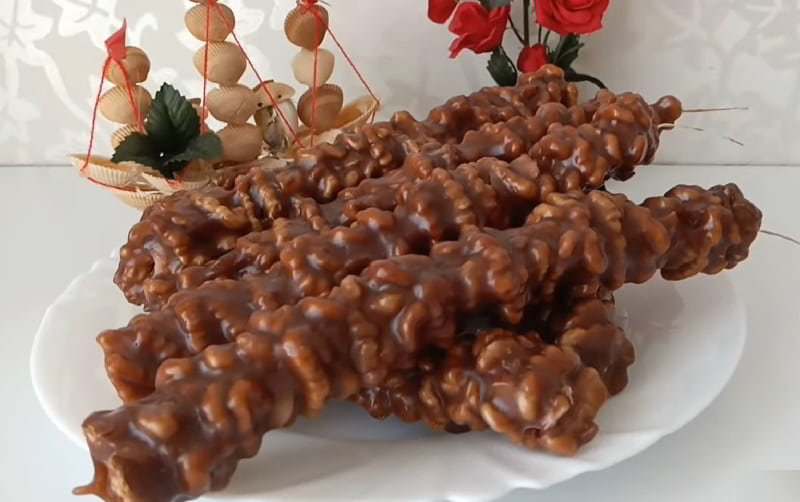
Orcik candy, a regional specialty from Elazığ, is a unique confection crafted from walnuts and a slightly fermented juice known as şıra, typically made from grapes or blackberries. This delightful treat bears resemblance to churchkhela but distinguishes itself by incorporating hand-pulled candy. The process involves stuffing the walnut and grape mixture into the candy, resulting in a delectable fusion of flavors and textures. With its roots deeply embedded in local culinary traditions, orcik candy showcases the ingenuity of Elazığ's confectioners and the rich diversity of Turkish sweets. Whether enjoyed as a sweet snack or a cherished dessert, orcik candy offers a delightful taste of tradition, capturing the essence of regional flavors and craftsmanship.
Dilber Dudağı
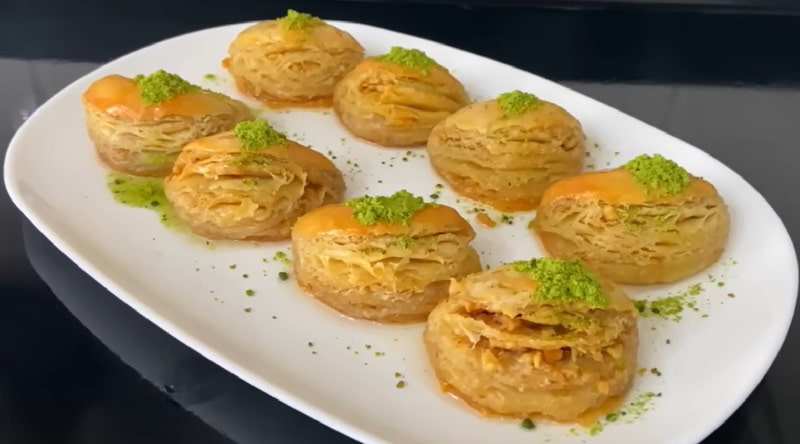
Dilber dudağı, which translates to "Lady's lips" or "Sweetheart's lips" in Turkish, is a tantalizing Turkish dessert known for its suggestive name and delightful flavor. The ingredients used in its preparation typically include eggs, lemon, yogurt, milk, butter, sunflower oil, sugar, baking powder, flour, and water. This dessert, like many others in Turkish cuisine, carries with it a playful and suggestive connotation, adding to its allure and charm. The name "Dilber dudağı" evokes romantic and flirtatious imagery, making it a whimsical and intriguing addition to any dessert table. Despite its suggestive name, the dessert itself is cherished for its delectable taste and texture, often enjoyed as a sweet indulgence during special occasions or as a treat to share with loved ones.
Tahinopita
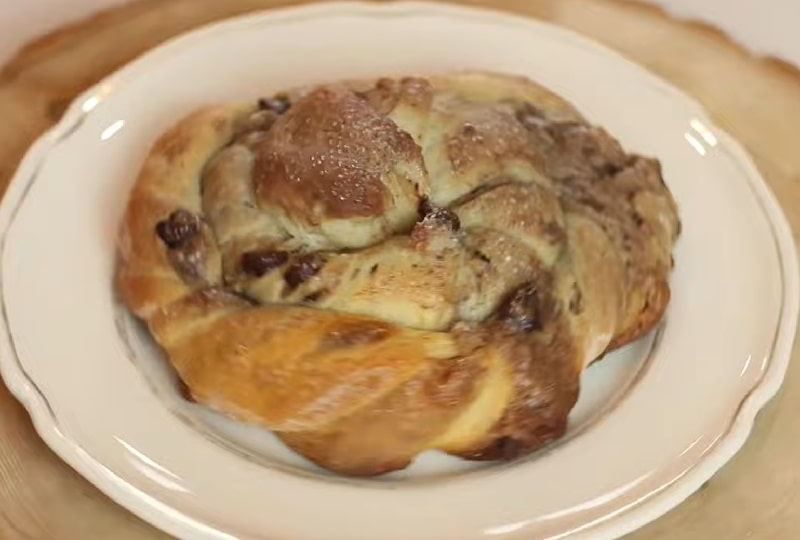
Tahinopita, originating from Cyprus, is a beloved cake in Turkish cuisine that boasts a delightful sesame paste flavor. This dessert comes in various forms, including quickbread versions leavened with baking soda or baking powder, yeasted variations, and phyllo layer versions. Each version offers a unique texture and taste, ranging from fluffy and light to rich and layered. Regardless of the variation, tahinopita captivates taste buds with its distinctive sesame flavor, adding a delightful twist to traditional cakes. Whether enjoyed as a sweet treat with tea or coffee or served as a dessert at special occasions, tahinopita holds a special place in Turkish culinary tradition, offering a taste of the Mediterranean with every bite.
Bici Bici

Bici bici, also known as bicibici muhallebisi, is a delightful Turkish dessert celebrated for its lightness, commonly enjoyed in southern Turkey and the broader Mediterranean region, particularly in provinces like Adana and Mersin, where it's favored during the summer months. The name of this dessert originates from the sound created when the starch component is gently squeezed between the fingers during its preparation. This refreshing treat typically features a unique texture that is both light and satisfying, making it perfect for hot summer days. With its subtle sweetness and delicate consistency, bici bici offers a delightful culinary experience that embodies the flavors and traditions of the Mediterranean. Whether enjoyed as a refreshing dessert or a sweet indulgence, bici bici remains a beloved part of Turkish cuisine, cherished for its simplicity and irresistible taste.
Reshteh Khoshkar
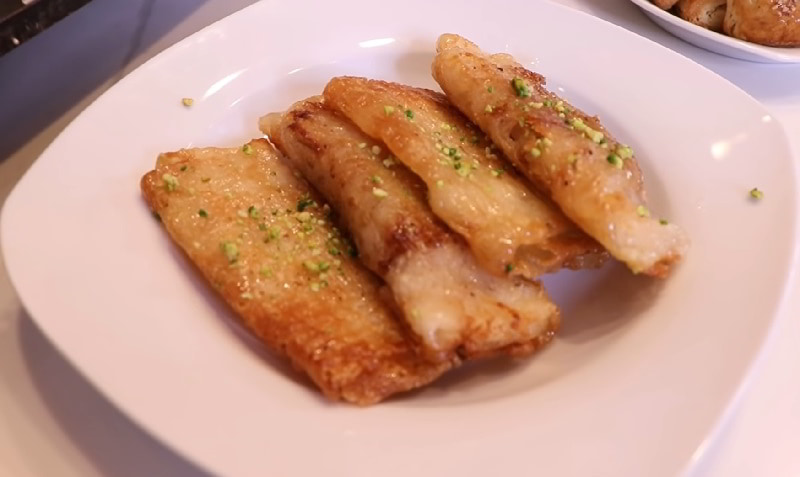
Reshteh khoshkar, a cherished traditional cookie particularly enjoyed during Ramadan in Iran's Gilan Province, is also a beloved treat in Turkish cuisine. This delightful pastry is crafted from rice flour and filled with a flavorful mixture of cinnamon, sugar, hazelnuts, ginger, cardamom, and other spices, creating a symphony of flavors. The preparation involves frying the pastry in hot oil or fat until golden brown and crispy. To make reshteh khoshkar, a batter made from walnuts, rice flour, wheat flour, almonds, sugar, and cinnamon is slowly fried in oil. The batter is poured into a container with multiple holes, allowing it to flow out like a fountain onto a hot skillet, forming a thin, patterned sheet of rice pastry. The pastry is then filled with a mixture of crushed walnuts, sugar, and other ingredients before being folded securely and fried until golden and delicious. This delectable treat is enjoyed for its crispy texture and aromatic flavors, making it a favorite during festive occasions and celebrations.
Tahinli Pide

Tahinli pide is a variation of the traditional Turkish İçli pide that incorporates sesame paste, also known as tahini, into the filling or topping. İçli pide typically consists of a boat-shaped dough filled with a mixture of ground meat, onions, and spices, then baked until golden brown. In the case of tahinli pide, sesame paste is added to the filling mixture to enhance the flavor and texture of the dish. The tahini lends a nutty and slightly sweet taste to the savory filling, creating a unique and delicious combination of flavors. After the pide is assembled with the tahini-infused filling, it is typically baked until the dough is cooked through and the filling is heated and melded together. The result is a delightful Turkish pastry with a rich and satisfying taste that combines the savory elements of traditional İçli pide with the distinctive flavor of sesame paste.
Nevzine Tatlısı

Nevzine dessert, known as "Nevzine tatlısı" in Turkish, is a delightful sweet treat from the Kayseri province, celebrated for its rich flavors and cultural significance. This regional specialty is particularly cherished during Ramadan and festive occasions. Crafted from a blend of tahini, pekmez (grape molasses), and walnuts, Nevzine dessert boasts a harmonious balance of nutty, sweet, and slightly tangy flavors. The tahini contributes a creamy texture and a subtle hint of sesame, while the pekmez adds a natural sweetness and depth of flavor. The walnuts provide a satisfying crunch and a nutty aroma, enhancing the overall taste experience. Typically served as bite-sized pieces, Nevzine dessert is enjoyed as a delightful indulgence to mark special occasions and celebrations. Its unique combination of ingredients and cultural significance make it a beloved part of Turkish culinary heritage, celebrated for its delicious taste and festive spirit.
Şıllık
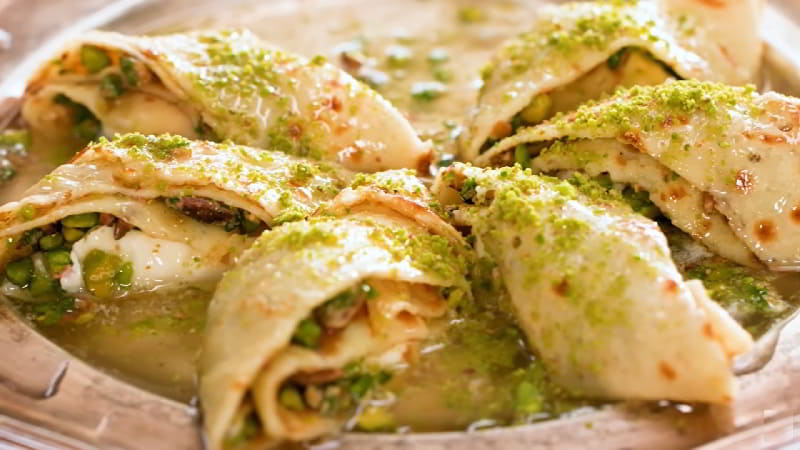
Şıllık, a beloved Turkish dessert crepe originating from the southeastern Urfa province, is renowned for its delectable combination of flavors and textures. Crafted from a delicate dough made of milk and flour, reminiscent of traditional crepes, Şıllık is generously filled with ground walnuts, offering a rich and nutty essence. Upon serving, the crepe is adorned with a drizzle of simple syrup and a sprinkle of chopped pistachios, adding sweetness and crunch to every bite. While some versions feature a blend of walnut and pistachio fillings, others may include additional ingredients for variation. Interestingly, the word "şıllık" in Turkish carries a meaning related to promiscuity, leading some women in the conservative province of Urfa to feel uncomfortable ordering the dessert by name. Instead, they may opt to have a male relative order it for them or simply refer to it as "that dessert," showcasing the cultural nuances surrounding this delightful culinary treat.
Vizier's Fingers
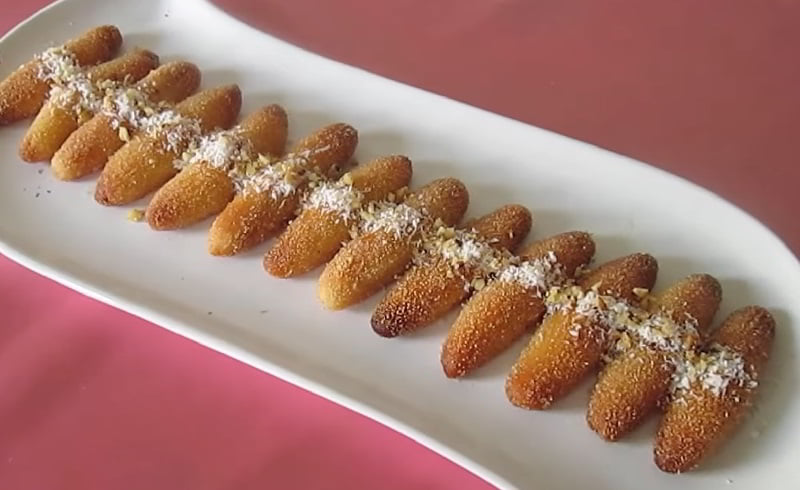
Vizier's fingers, known as Vezir parmağı in Turkish, stand as a notable Turkish dessert renowned for its unique blend of flavors and cultural significance. Crafted from a mixture of semolina, milk, egg, caster sugar, water, lemon juice, almond essence, butter, and rose water, this dessert offers a delightful symphony of tastes and aromas. Interestingly, like many other Turkish desserts, Vizier's fingers evoke imagery and associations that extend beyond culinary delights. Just as Hanımgöbeği (lady's navel) or Dilber Dudağı (lady lips), stir the imagination with their suggestive names, Vizier's fingers carry a similar allure, reflecting the rich cultural heritage and playful spirit embedded within Turkish cuisine. In addition to their delectable flavors, these desserts serve as reminders of the intricate relationship between food, culture, and tradition, offering a glimpse into the diverse tapestry of Turkish culinary delights.
Saray Helva

Saray helva, or Saray Helvası, stands out as a beloved Turkish dessert cherished for its delightful taste and rich texture. This delectable treat is crafted from a blend of white sugar, wheat flour, butter, vegetable margarine, and vanillin flavor, combining to create a symphony of flavors that captivates the palate. With its soft, crumbly consistency and irresistible sweetness, Saray helva holds a special place in Turkish culinary culture, often enjoyed on various occasions and celebrations. Whether served as a dessert after a hearty meal or shared among friends and family during festive gatherings, Saray helva embodies the essence of Turkish hospitality and tradition. As a staple dessert in Turkish cuisine, Saray helva reflects the ingenuity and creativity of Turkish confectioners, offering a delightful sensory experience that evokes feelings of warmth, comfort, and joy with every bite.
Kaysefe
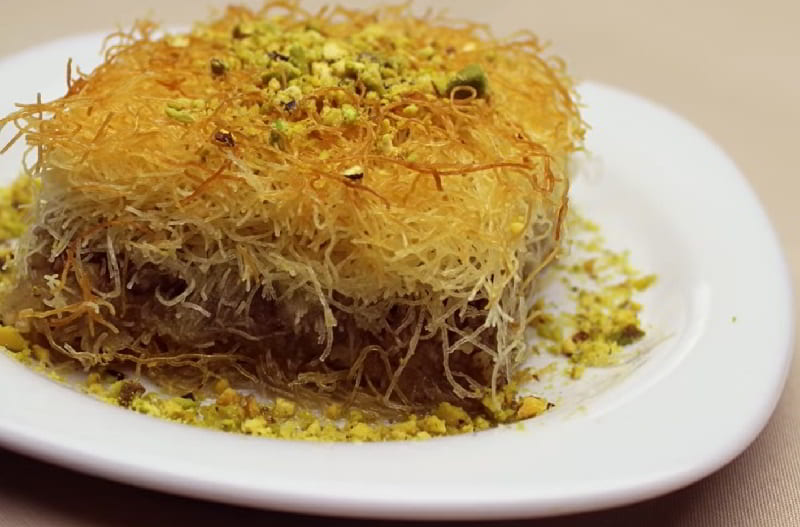
Kaysefe, a cherished Turkish dessert hailing from the region of Erzurum, offers a delightful blend of dried fruits and indulgent melted butter. This regional specialty showcases the rich culinary heritage of Turkey, incorporating a variety of dried fruits such as apricots or mulberries to create a symphony of flavors and textures. To prepare Kaysefe, dried fruit is first boiled in water with sugar, infusing it with sweetness and moisture. Once softened, the fruit is generously drizzled with melted butter, adding richness and depth to the dessert. Finally, Kaysefe is adorned with a sprinkling of chopped or ground walnuts, pistachios, or hazelnuts, enhancing its taste and visual appeal. With its harmonious blend of sweet, buttery, and nutty flavors, Kaysefe is a beloved treat enjoyed on special occasions and gatherings in Erzurum and beyond, serving as a delicious reminder of Turkey's diverse culinary traditions.
Balparmak Tatlısı

Balparmak tatlısı, also known as "Honey Finger Dessert," is a delightful Turkish sweet crafted from a blend of ingredients that includes eggs, butter, baking powder, walnuts, cinnamon, cloves, semolina, and flour. Despite its name, this dessert is intriguingly made without the use of honey. Resembling other Turkish delights like kalburabastı and Vizier's fingers, Balparmak tatlısı showcases the richness of Turkish dessert culture with its intricate flavors and textures. The combination of buttery semolina dough, crunchy walnuts, and aromatic spices creates a unique sensory experience that is both indulgent and satisfying. Whether enjoyed as a sweet treat after a meal or served during special occasions and gatherings, Balparmak tatlısı is a beloved dessert that holds a special place in Turkish cuisine. Its distinct flavor profile and cultural significance make it a favorite among dessert enthusiasts and a symbol of culinary tradition in Turkey.
Komaj Sehen
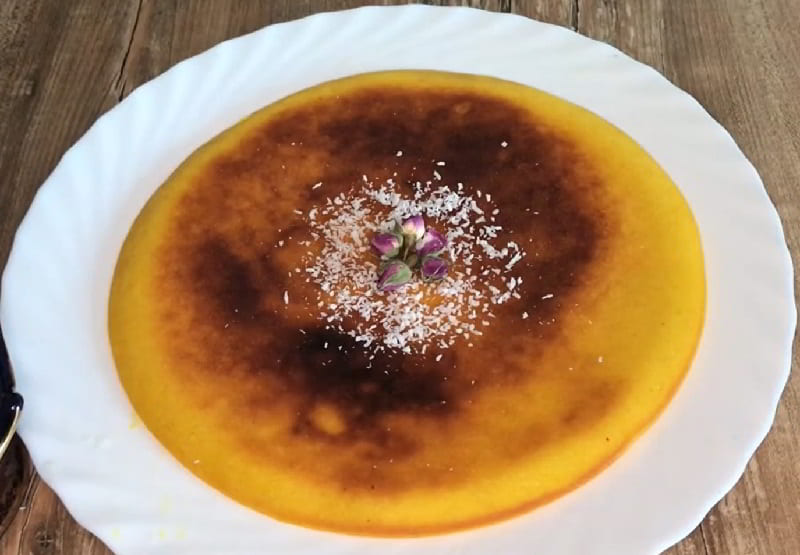
Komaj Sehen, originating from Iran's Kerman Province, is known as Shahin Kurabiyesi in Turkey. This pastry is crafted with a combination of dough, dates, almonds, walnuts, pistachios, and sugar, mirroring the ingredients used in Komaj Sehen. Despite being known by different names in each region, the essence of the pastry remains consistent, offering a delightful blend of flavors and textures. Whether enjoyed in Iran or Turkey, both Komaj Sehen and Shahin Kurabiyesi serve as cultural symbols, representing the rich culinary heritage of their respective regions. The shared ingredients and similar preparation methods highlight the cultural connections between Iran and Turkey, showcasing how culinary traditions can transcend borders and bring people together through the universal language of food.
Dibile
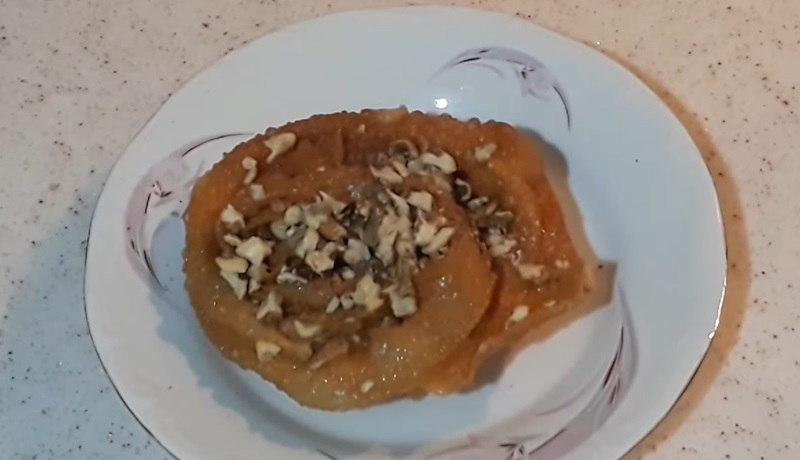
Dibile, also known as Dible, is a traditional Turkish dessert originating from İzmir, particularly associated with the Yörük community. Resembling angel wings, these delicate pastries are made from thin sheet-like dough. The preparation involves rolling the dough into long, thin strips, which are then fried until golden and crispy. Unlike angel wings, however, dibile is distinguished by its syrupy coating. After frying, the pastries are folded in hot oil and then immersed in a sweet syrup made from pekmez (grape molasses), sugar, or honey. This syrup infuses the pastries with a rich sweetness, creating a delightful contrast to the crispy texture of the dough. Dibile is cherished for its unique combination of textures and flavors, making it a beloved treat in İzmir and beyond, especially during festive occasions and celebrations.
Walnut Stuffed Figs
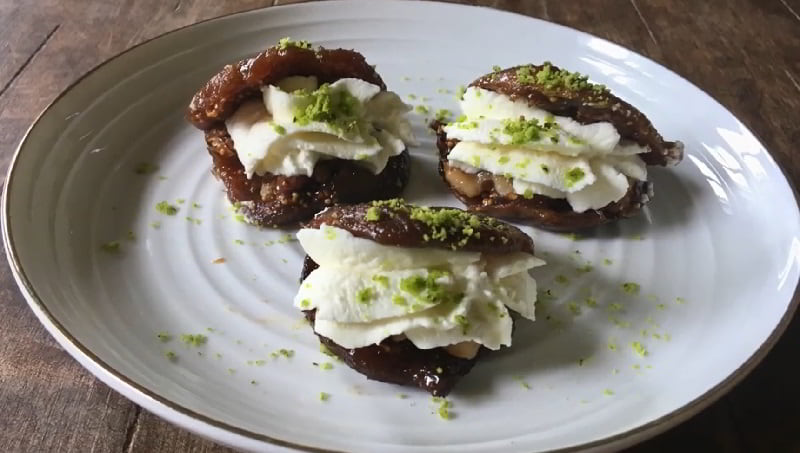
Walnut stuffed figs, known as "Cevizli kuru incir tatlısı" in Turkish, represent a delightful Turkish dessert crafted from a handful of wholesome ingredients. To prepare this sweet treat, dried figs are first soaked in warm water to soften them. Once softened, each fig is carefully stuffed with a mixture of walnuts, creating a delightful contrast of textures and flavors. The figs are then cooked gently in a mixture of milk, water, sugar, and butter, allowing them to absorb the sweet and creamy essence of the liquid. Once cooked to perfection, the walnut stuffed figs are garnished with additional walnuts for added visual appeal and a crunchy texture. Rich in flavor and bursting with natural sweetness, walnut stuffed figs offer a satisfying indulgence that celebrates the bountiful flavors of Turkish cuisine. Whether enjoyed as a dessert or a sweet snack, this delightful treat is sure to delight the taste buds and leave a lasting impression.
Muğla Halkası
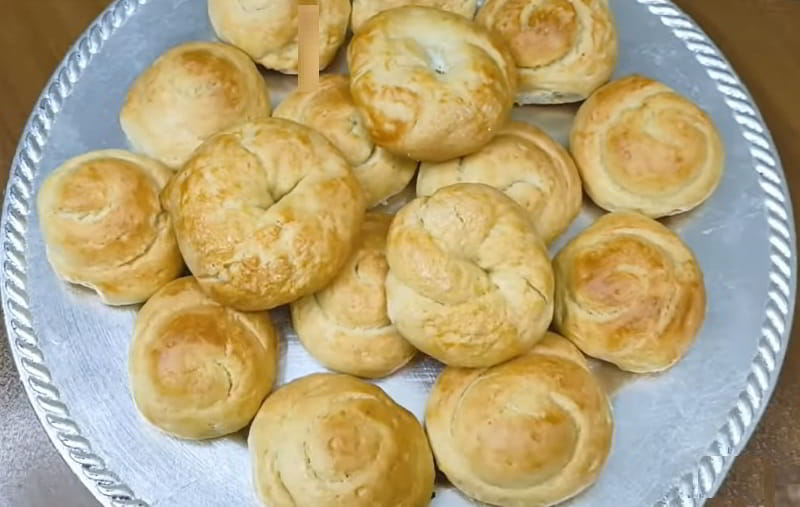
Muğla halkası, also known as Hıdırellez Halkası, is a type of Turkish cookie characterized by its distinct ingredients and cultural significance. Made from a mixture of lemon juice, olive oil, egg, baking powder, yogurt, and flour, these cookies boast a unique blend of flavors and textures. The inclusion of olive oil adds richness and depth to the dough, while the yogurt contributes to its moist and tender crumb. Lemon juice provides a subtle citrusy tang, enhancing the overall flavor profile of the cookies. Traditionally, Muğla halkası or Hıdırellez Halkası holds special significance during the Hıdırellez festival, celebrated in various regions of Turkey. These cookies are often enjoyed as part of the festivities, symbolizing renewal, abundance, and prosperity. With their delicious taste and cultural significance, Muğla halkası or Hıdırellez Halkası hold a cherished place in Turkish culinary tradition, delighting both locals and visitors alike.
Tel Kadayıf
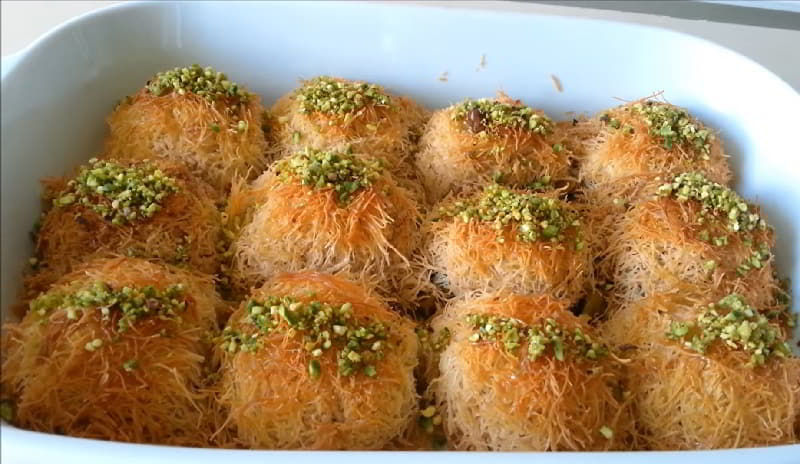
Tel kadayıf, a beloved Turkish dessert often savored during the holy month of Ramadan, features delicate kadayıf noodles as its main ingredient. To prepare this indulgent treat, layers of kadayıf noodles are carefully interspersed with nuts such as peanuts or walnuts, adding a delightful crunch and nutty flavor to each bite. Once assembled, the tel kadayıf is baked in the oven until golden and crispy. After baking, it is generously drenched with a sugary syrup, infusing the dessert with sweetness and moisture. The syrupy coating enhances the texture and flavor of the kadayıf, creating a harmonious balance of sweetness and nuttiness. Tel kadayıf embodies the spirit of Ramadan with its comforting warmth and irresistible sweetness, making it a cherished part of Turkish culinary tradition during this auspicious time of year.
Köylü Pastası
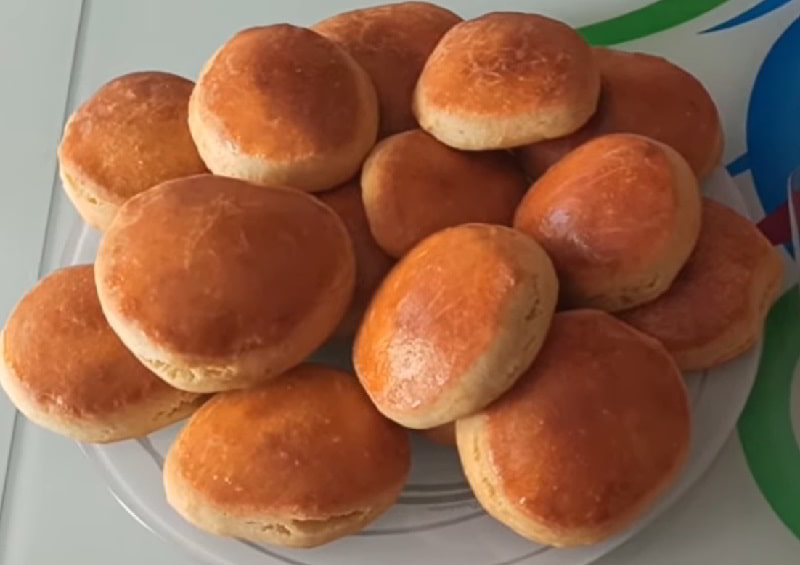
Köylü pastası, known as "peasant's cake" in English, is a delightful treat hailing from Turkish cuisine. This cake, which can also be classified as a kurabiye, is crafted from simple yet flavorful ingredients including egg, flour, yogurt, and butter. To prepare Köylü pastası, these ingredients are combined to form a rich and creamy batter, which is then poured into a baking dish and baked to golden perfection. The result is a moist and tender cake with a slightly tangy flavor from the yogurt and a rich, buttery taste that delights the palate. Köylü pastası embodies the rustic charm of traditional Turkish baking, offering a comforting and satisfying treat reminiscent of home-cooked goodness. Whether enjoyed with a cup of tea or as a sweet ending to a meal, this peasant's cake is sure to bring warmth and joy to any occasion.
Cevizli Irmik Tatlısı
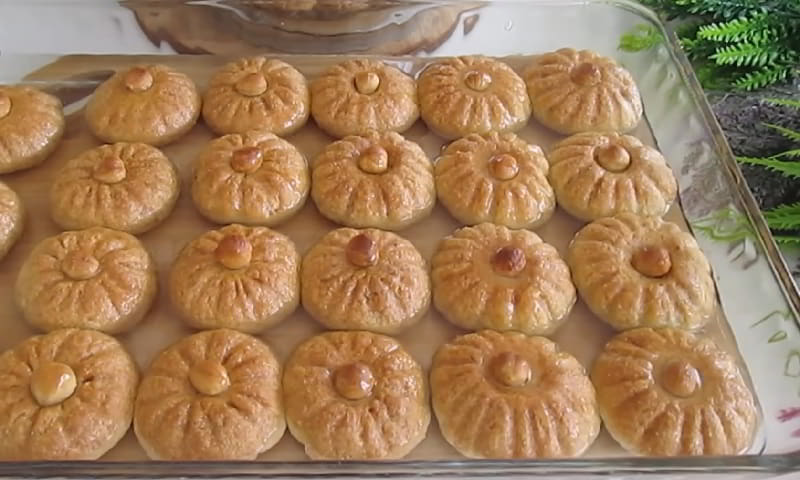
Cevizli irmik tatlısı, a beloved Turkish dessert, is a cake featuring walnuts and sweet syrup as its star ingredients. This delectable treat boasts numerous variations, offering a delightful array of flavors and textures to indulge in. To create Cevizli irmik tatlısı, a moist and flavorful cake base is prepared, typically incorporating semolina (irmik) and finely chopped walnuts. Once baked to perfection, the cake is then soaked in a luscious sweet syrup, infusing it with irresistible sweetness. Variations of this dessert abound, with each recipe featuring unique additions to both the syrup and cake batter. Common enhancements include aromatic orange zest, fragrant cloves, and rich brown sugar, among others. These additional ingredients contribute to the depth of flavor and complexity of the dessert, elevating it to a truly indulgent delight. Cevizli irmik tatlısı exemplifies the richness and diversity of Turkish desserts, offering a symphony of flavors that captivates the senses with every bite.
Ispanaklı Kek
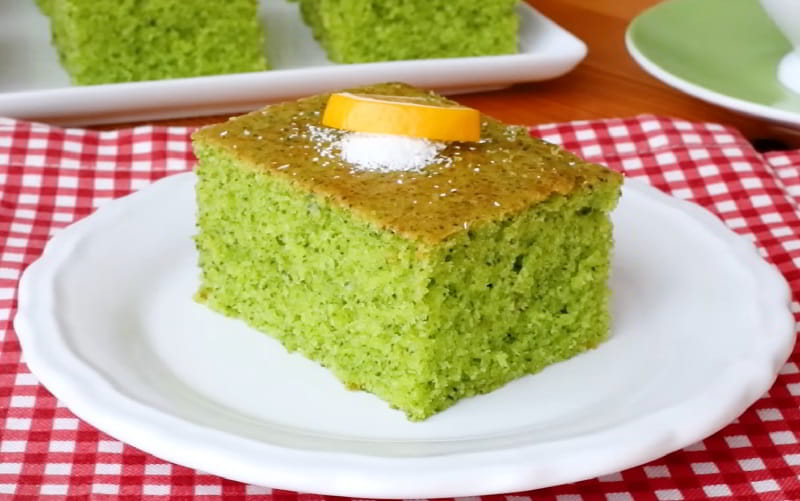
Spinach cake, or Ispanaklı kek, presents a unique and intriguing fusion of flavors within Turkish cuisine. This dessert showcases the inventive nature of Turkish culinary traditions, harmonizing the savory essence of spinach with the sweetness of cake. Crafted from a blend of spinach, flour, eggs, sugar, and butter, the base of Ispanaklı kek yields a moist and airy texture, adorned with the vibrant green hue of fresh spinach. The addition of sugar lends a subtle sweetness that beautifully complements the earthy notes of the spinach. Typically adorned with a dusting of powdered sugar or a drizzle of lemon glaze, Ispanaklı kek offers a delightful balance of flavors and textures. Its unexpected yet harmonious combination makes it a delightful surprise for the palate, appealing to both adventurous food enthusiasts and those seeking a unique culinary experience. Whether enjoyed as a sweet treat or a novel exploration of flavors, Ispanaklı kek is a Turkish dessert that promises to captivate and delight.
Murabbalı Mecidiye
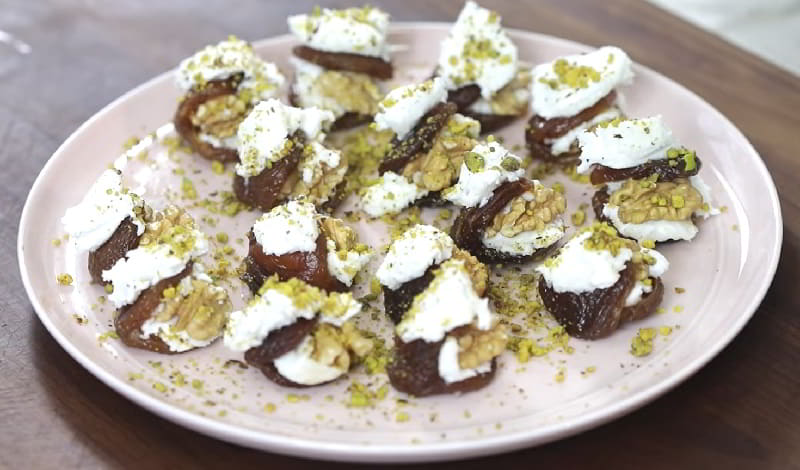
Murabbalı mecidiye, also known as Apricot Murabba Stuffed Cookies, is a delightful treat hailing from the rich culinary heritage of the Ottoman Empire. These cookies, known as kurabiye in Turkish, are filled with a luscious apricot murabba, adding a burst of fruity sweetness to each bite. To create these delectable cookies, a tender and buttery dough is crafted, encasing a generous dollop of apricot murabba within each cookie. Apricot murabba, a type of preserve or jam made from apricots, lends its rich flavor and natural sweetness to the filling, creating a delightful contrast with the buttery cookie exterior. Murabbalı mecidiye cookies offer a nostalgic taste of Ottoman cuisine, with each bite evoking the flavors and aromas of traditional Turkish sweets. Whether enjoyed with a cup of tea as an afternoon treat or shared with loved ones during festive occasions, these Apricot Murabba Stuffed Cookies are sure to delight the senses and leave a lasting impression.
Kabaklı Peynirli Börek
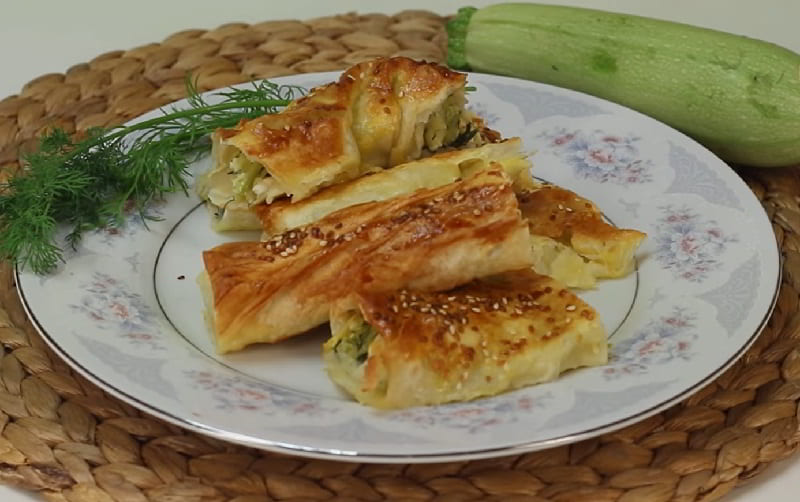
Kabaklı peynirli börek is a savory delight from Turkish cuisine, featuring layers of delicate phyllo pastry enveloping a flavorful filling composed mainly of zucchini and beyaz peynir, a traditional Turkish white cheese. The name of this delectable treat is a combination of "kabak," Turkish for zucchini, and "börek," referring to the pastry. To prepare kabaklı peynirli börek, thinly sliced zucchini and crumbled beyaz peynir are seasoned and layered between sheets of phyllo pastry. The layers are then folded and arranged in a baking dish before being baked to golden perfection. This savory börek offers a harmonious blend of textures and flavors, with the tender zucchini complementing the creamy and slightly salty beyaz peynir. Whether served as an appetizer, snack, or main course, kabaklı peynirli börek is a crowd-pleaser that showcases the culinary diversity and creativity of Turkish cuisine.
Chickpea Noghl
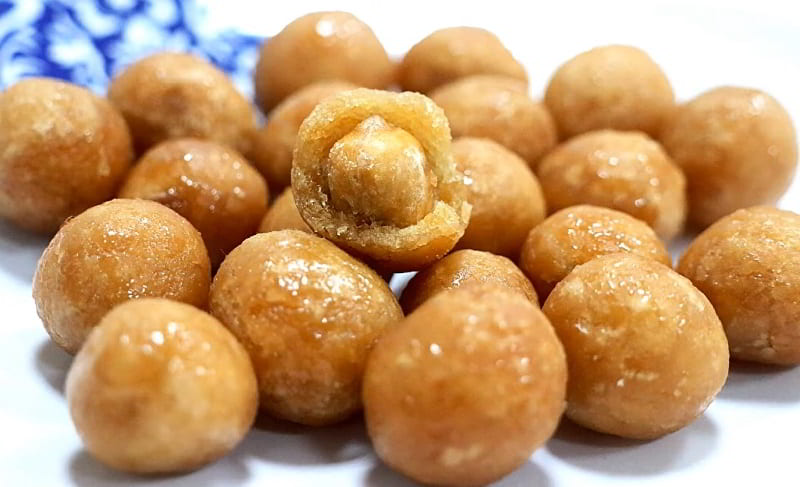
Chickpea noghl, also known as sugar-coated chickpea, is a beloved Turkish confection deeply rooted in tradition. To prepare this delightful treat, sugar is boiled with water and fragrant rose water until it forms a sweet syrup. Meanwhile, chickpeas are roasted to perfection, adding a nutty flavor and crunchy texture. Once the sugar syrup reaches the desired consistency, the roasted chickpeas are gently coated in the syrup, ensuring each one is evenly coated with the sweet mixture. As the syrup cools and solidifies, it forms a crystalline coating around the chickpeas, creating a delightful balance of sweetness and crunch. Chickpea noghl is often enjoyed as a snack or dessert, offering a unique combination of flavors and textures that delight the palate. Its simplicity and versatility make it a popular choice for celebrations, gatherings, or simply as a satisfying treat to enjoy any time of day.
Sütlaç

Sütlaç, also known as rice pudding, is a beloved Turkish dessert that has been enjoyed for centuries. This creamy and comforting dish is made with simple ingredients such as rice, milk, sugar, and sometimes a touch of rose water or vanilla for added flavor. The process begins by cooking the rice in water until it becomes tender, and then adding milk and sugar to create a rich and sweet mixture. The mixture is then simmered until it thickens to a creamy consistency, with occasional stirring to prevent the rice from sticking to the bottom of the pot. Sütlaç is traditionally served chilled, either in individual ramekins or in a larger dish, and garnished with a sprinkle of cinnamon or ground pistachios for a touch of visual appeal and additional flavor. With its smooth texture and delicate sweetness, sütlaç is a delightful dessert that is enjoyed by people of all ages in Turkey.
Taş Kadayıf
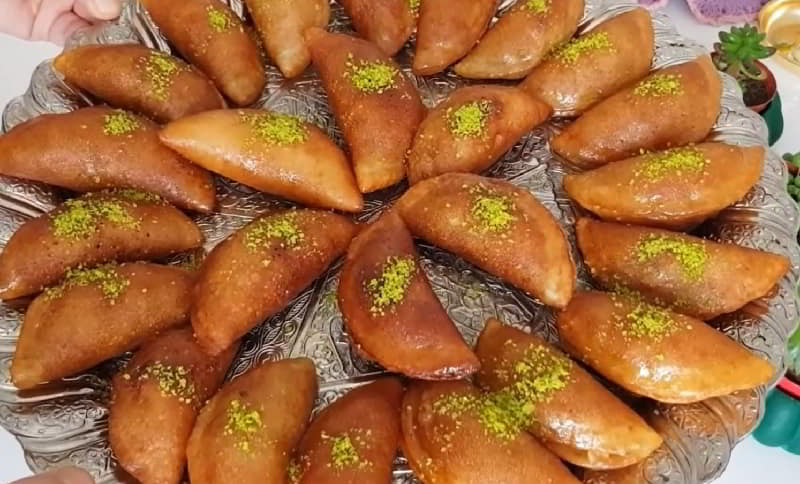
Taş kadayıf, also known as Stone kadayıf, is a popular Turkish dessert often enjoyed during the holy month of Ramadan. This sweet delicacy resembles a dumpling, featuring a filling of crunchy walnuts enveloped in a special dough. In Adana, a specific variation known as Adana Taş Kadayıf is particularly renowned for its unique texture and flavor. Characterized by its porous consistency, this dessert is crafted by folding dough into circular shapes measuring around 9-10 cm in diameter. The dough pockets are then carefully fried to golden perfection, creating a crispy exterior while maintaining a soft and chewy interior. Throughout the frying process, the walnuts nestled within the folds of the dough are toasted, infusing the dessert with a delightful nuttiness. Once cooked, Adana Taş Kadayıf is often served drizzled with syrup, adding a touch of sweetness that complements the richness of the walnuts. This dessert is cherished for its indulgent flavor and satisfying texture, making it a beloved treat during festive occasions and family gatherings.



-1709813013.jpg)


